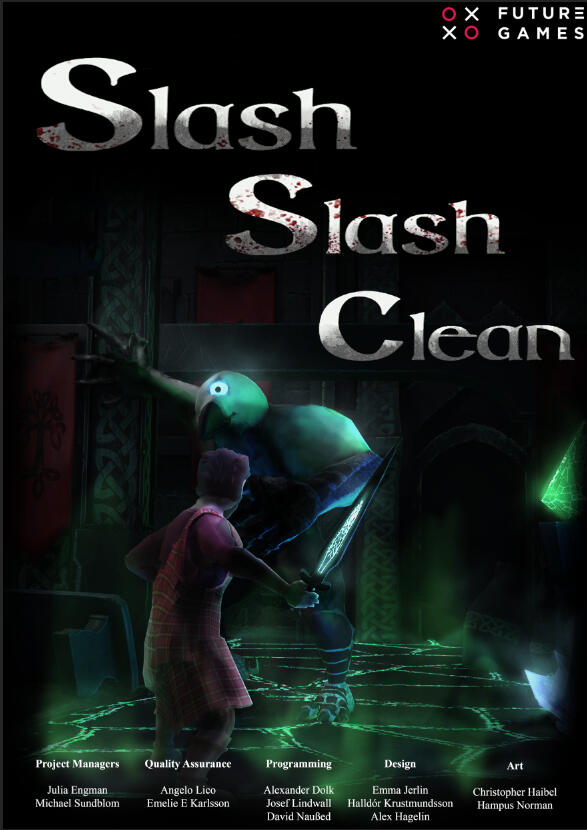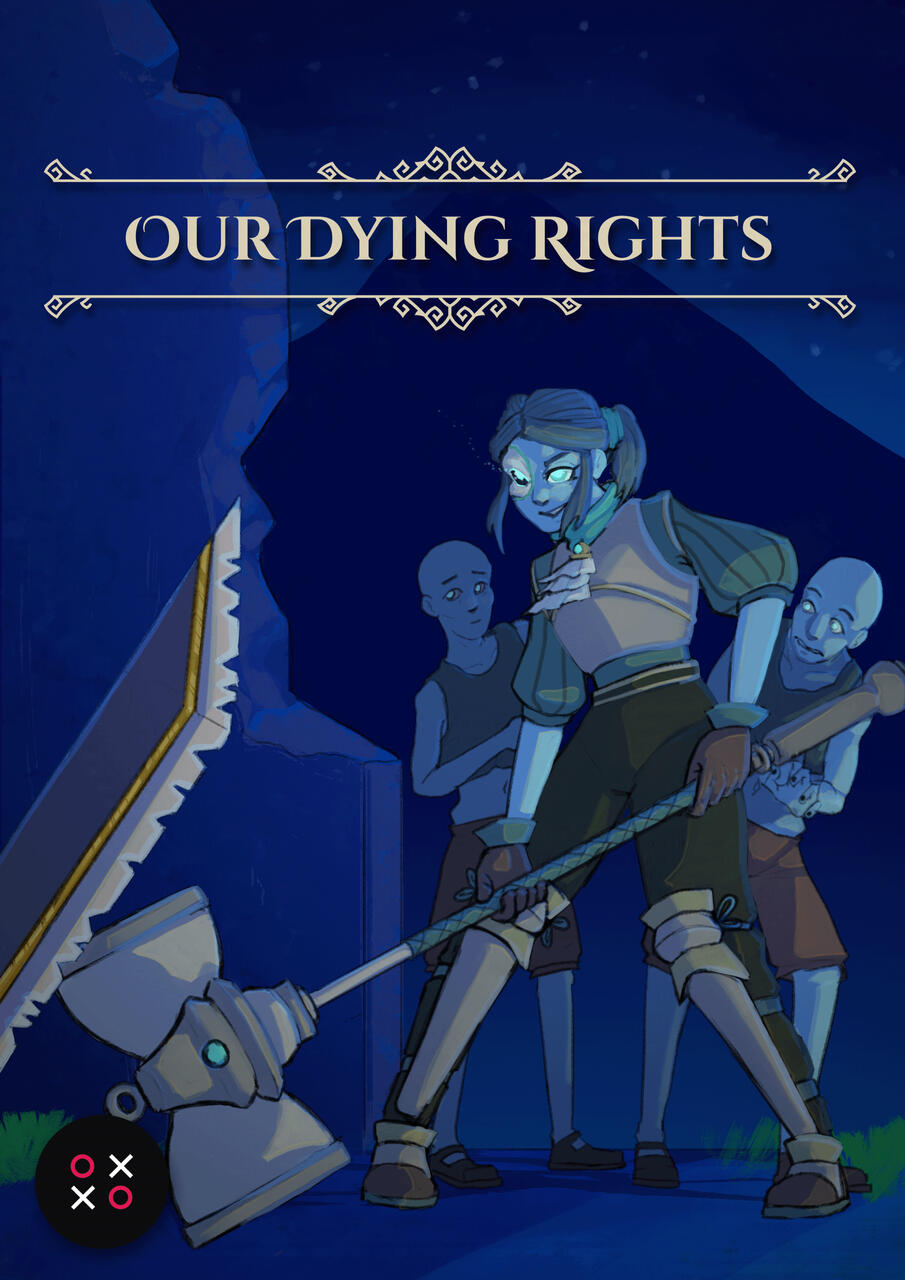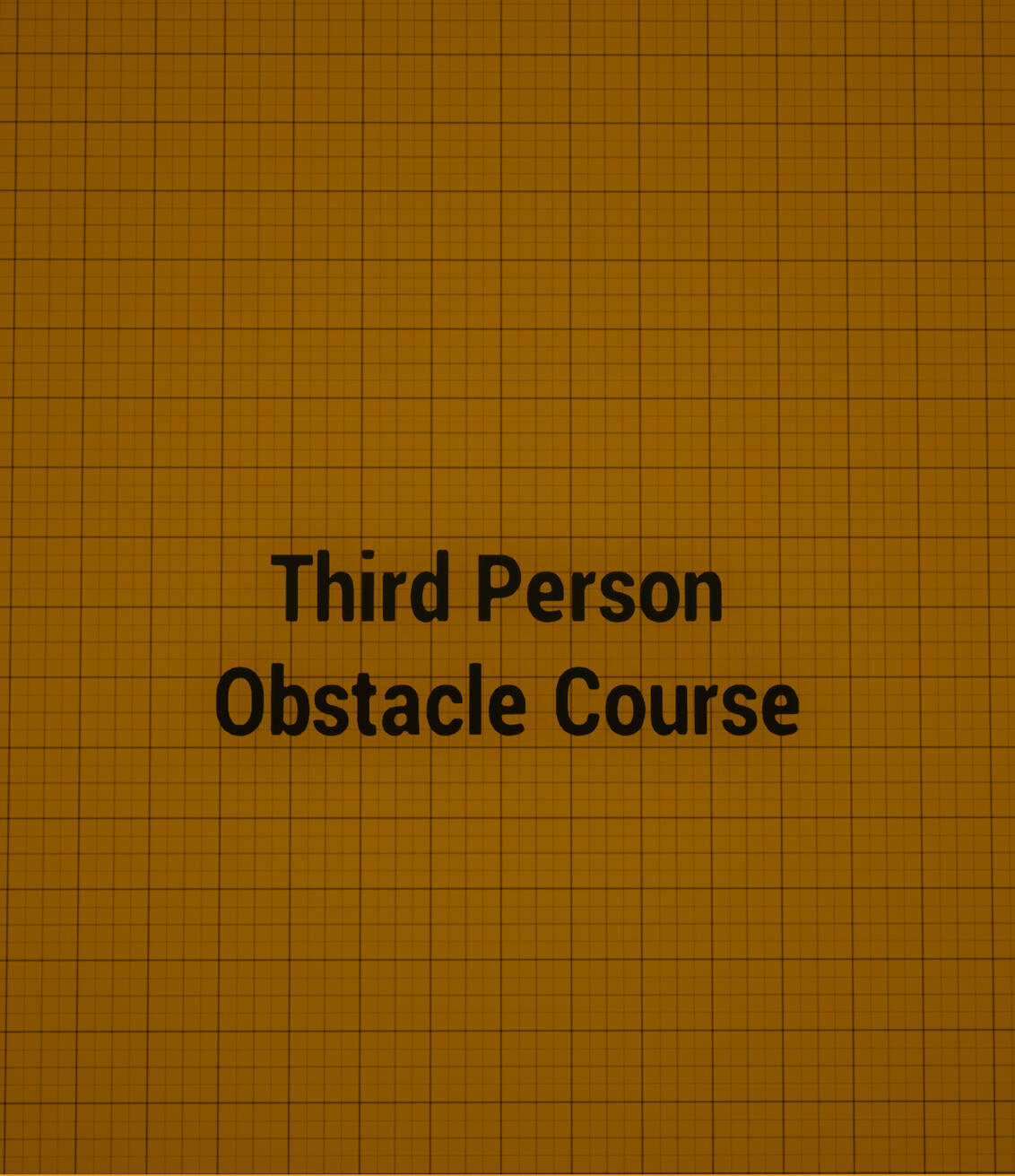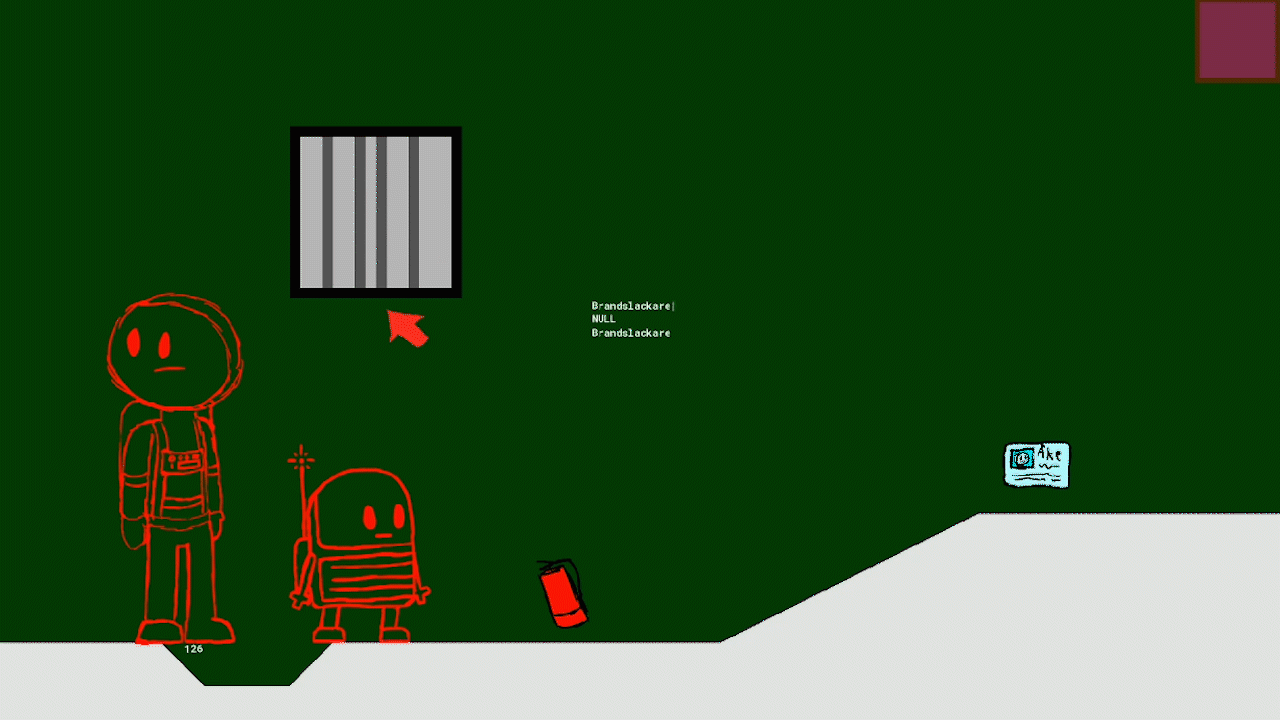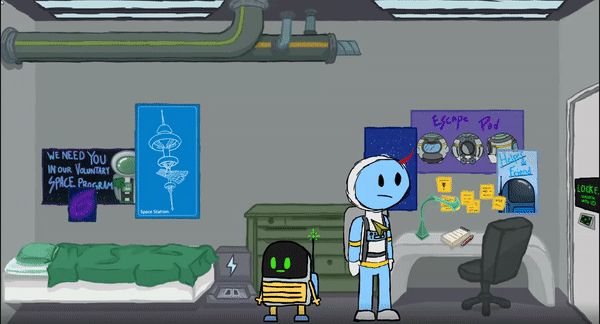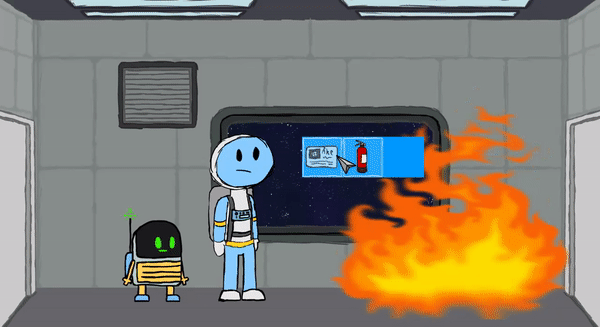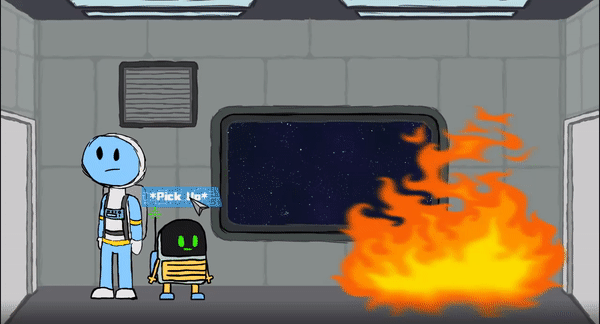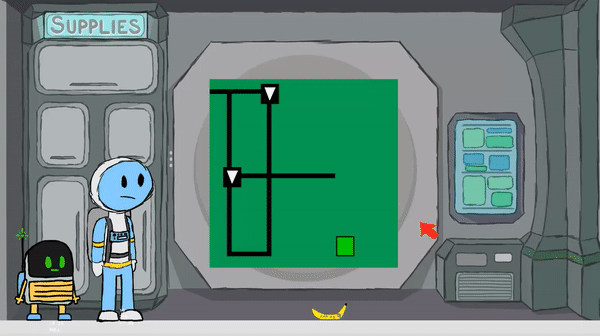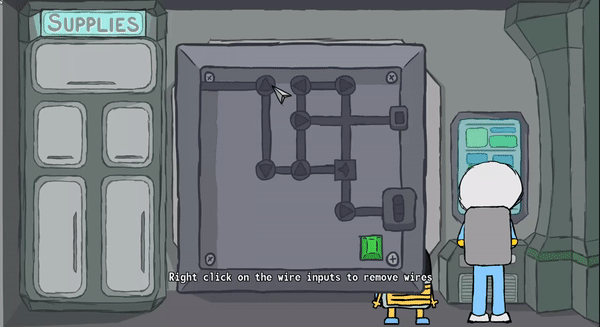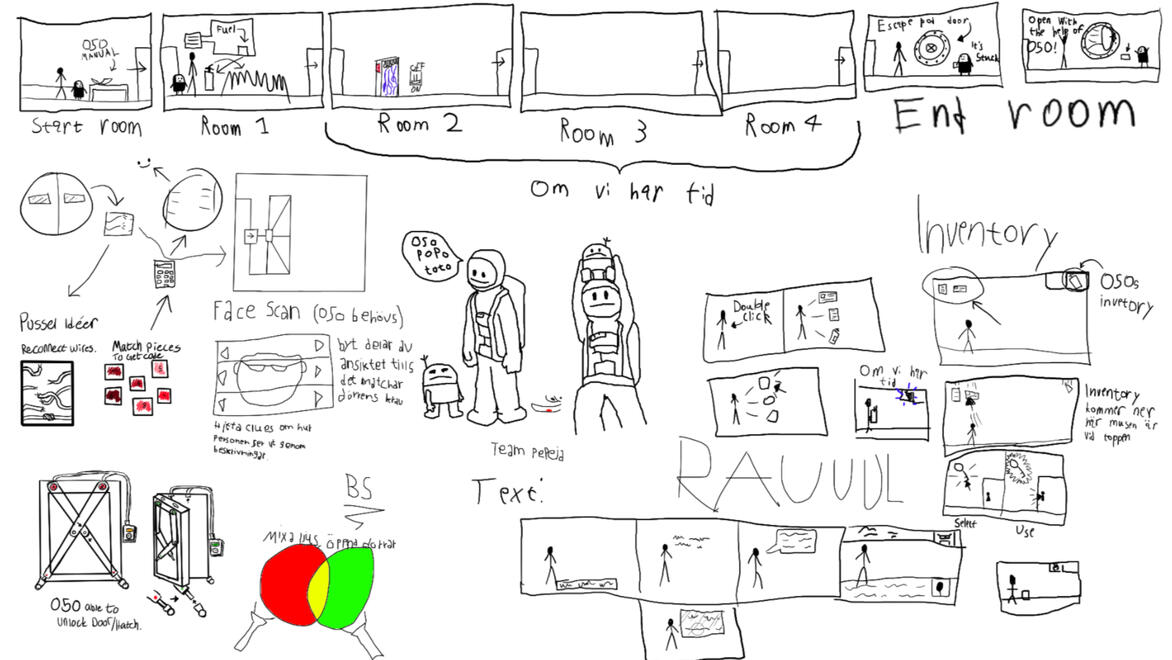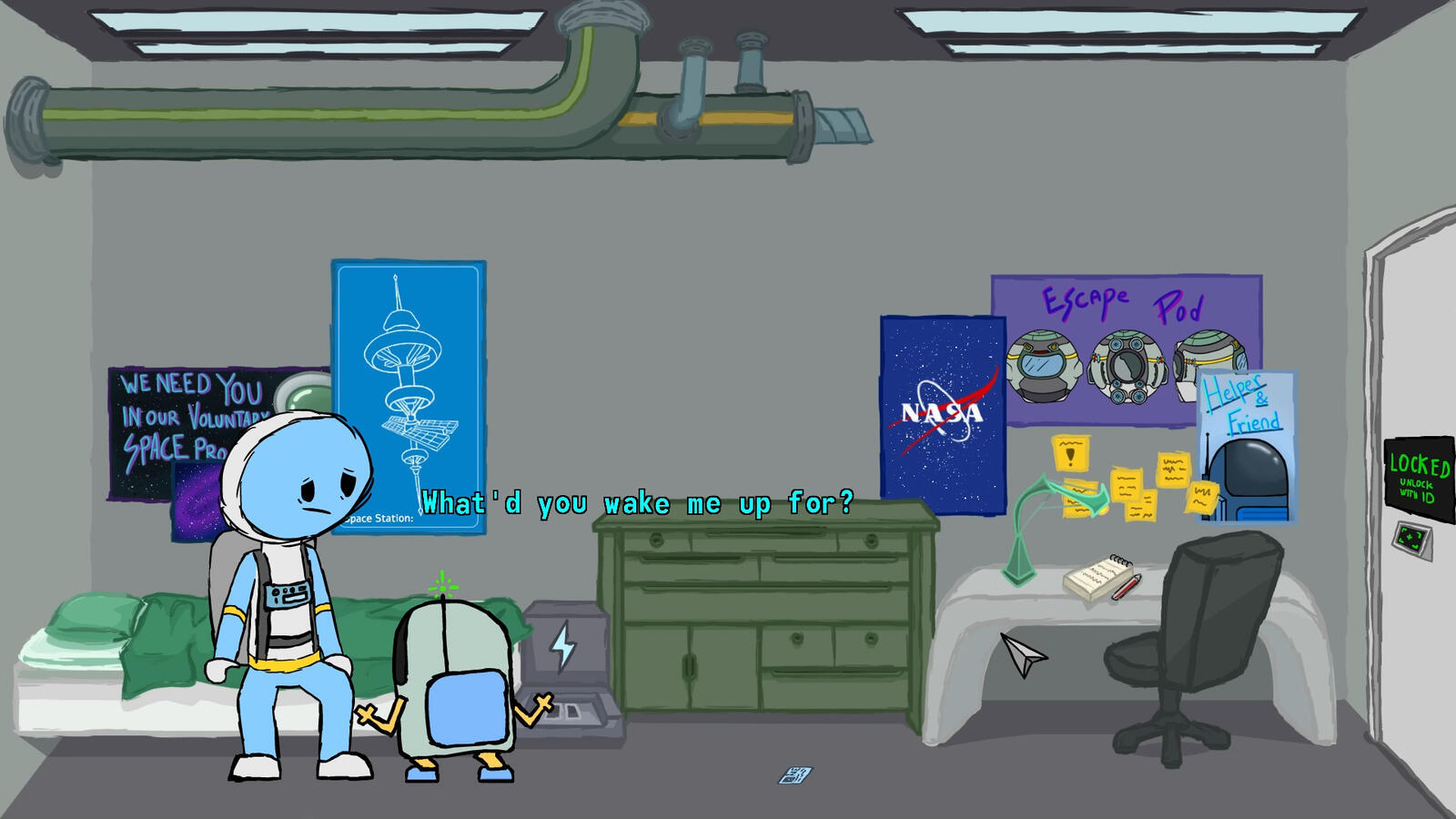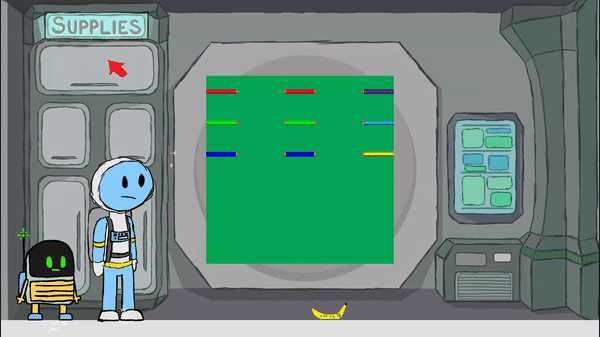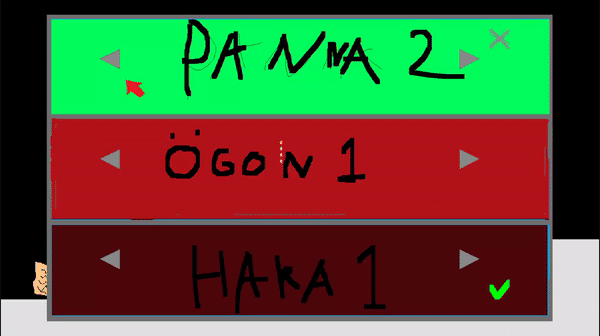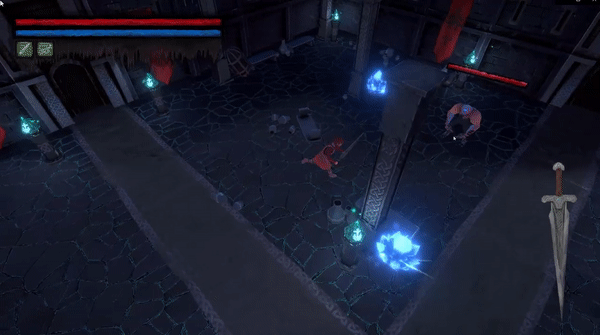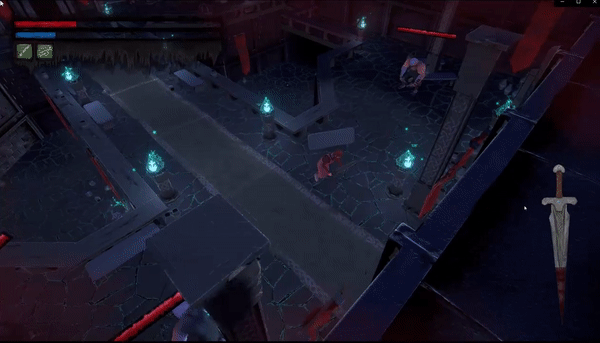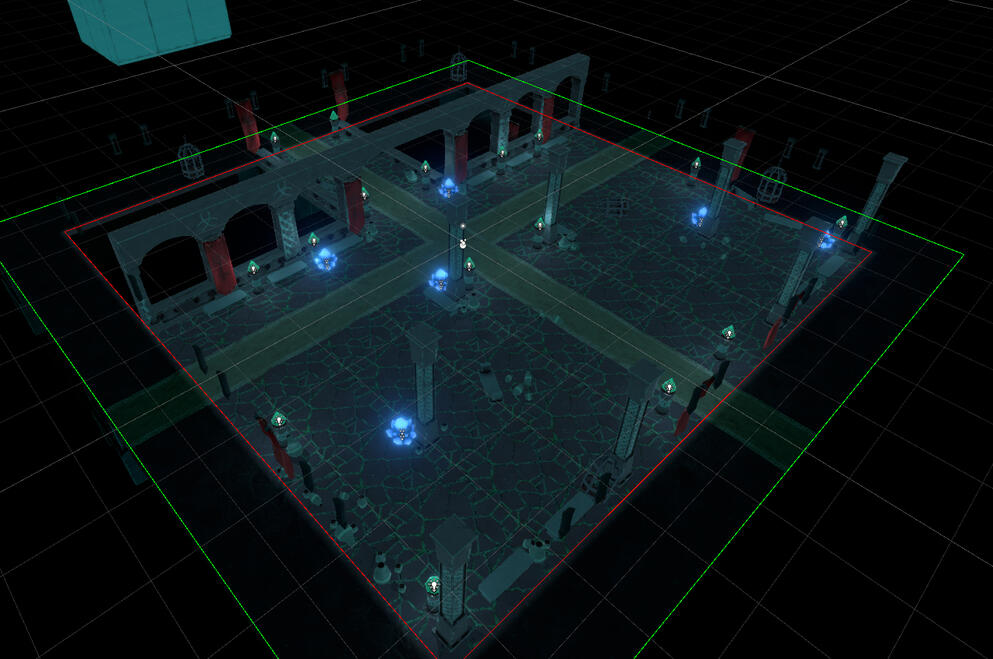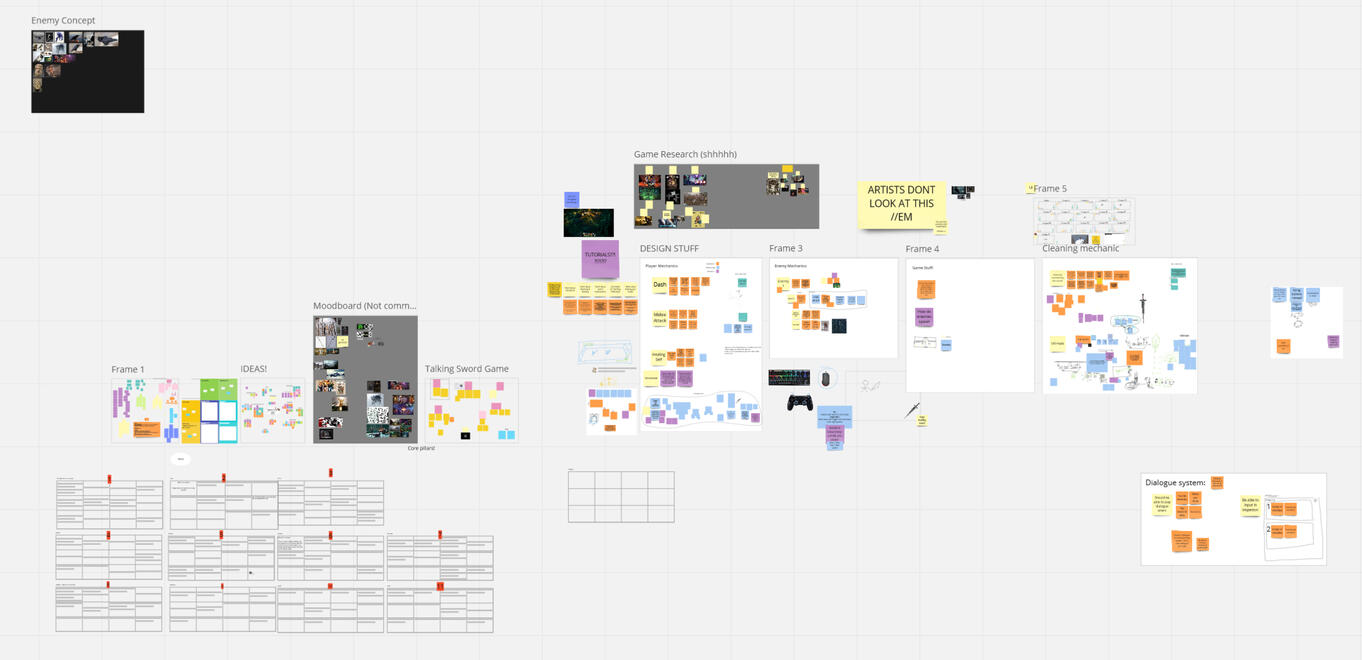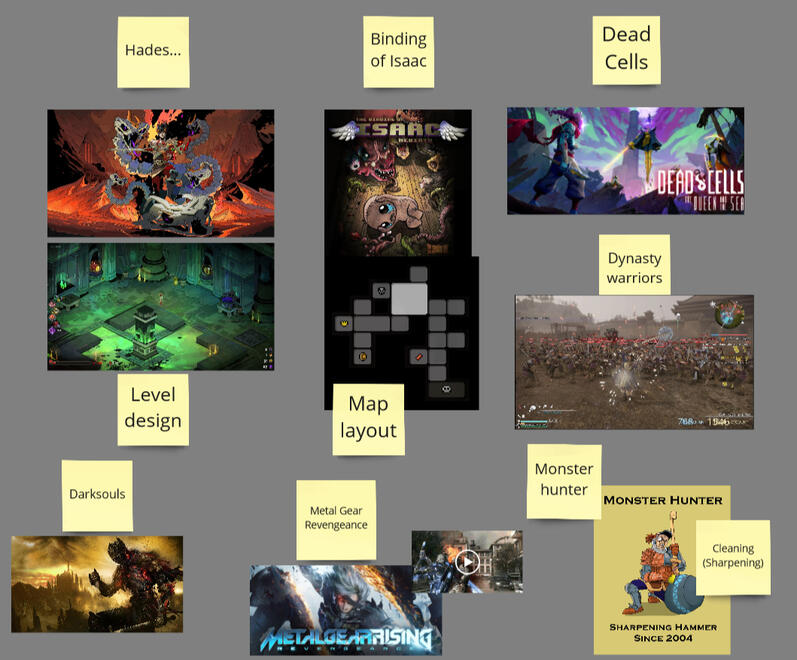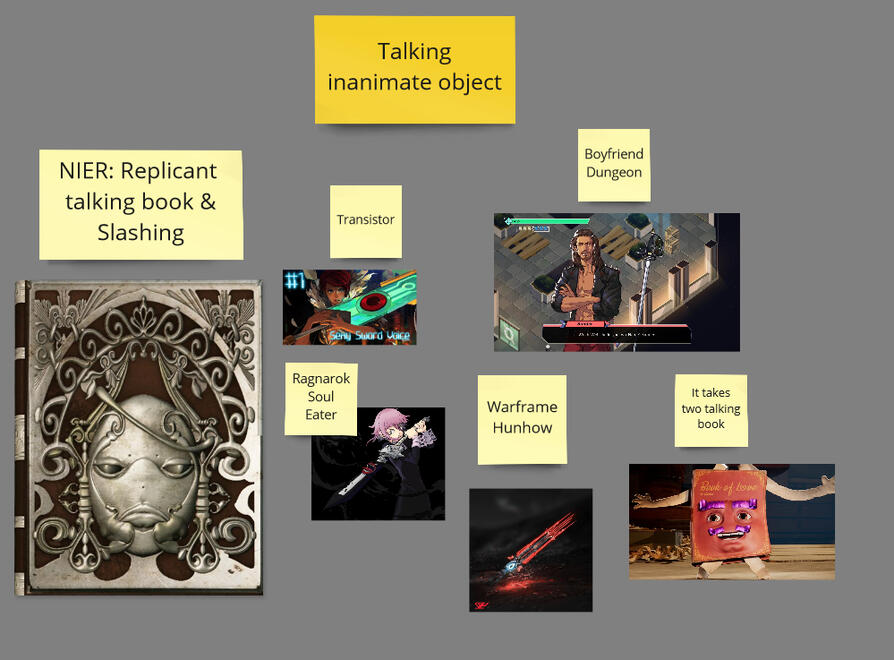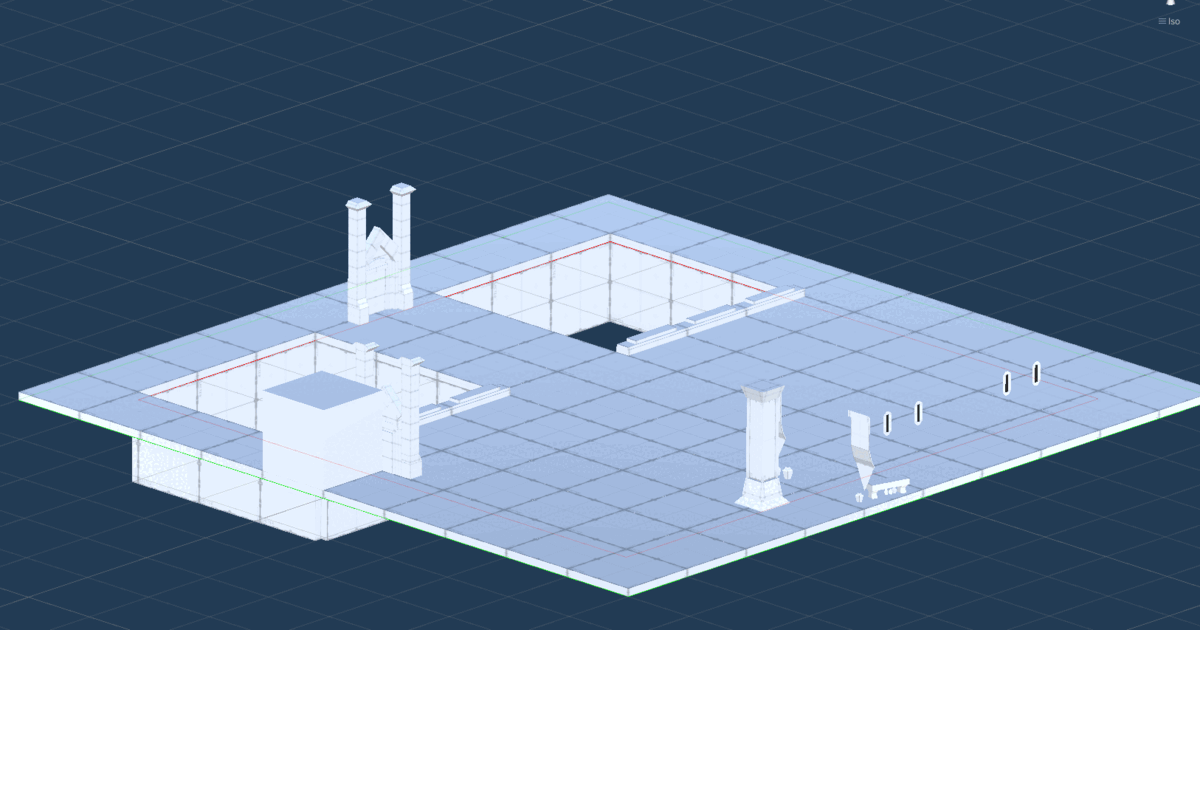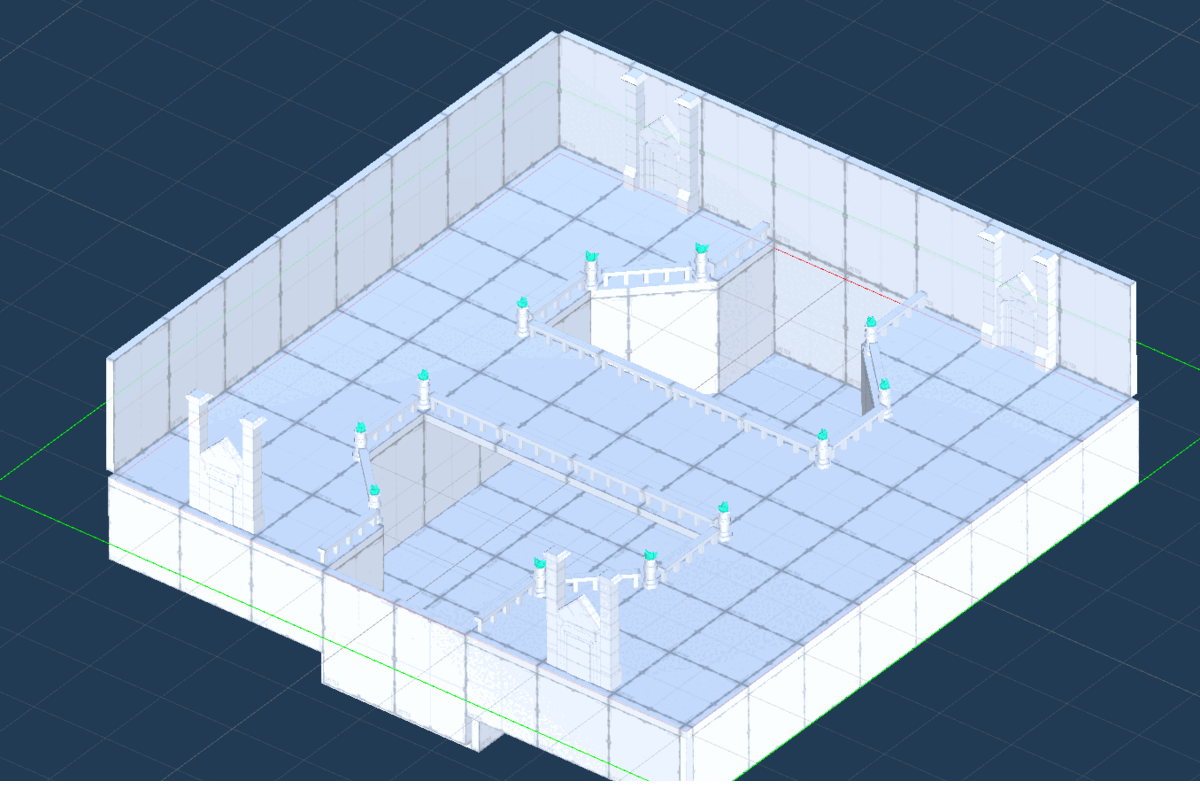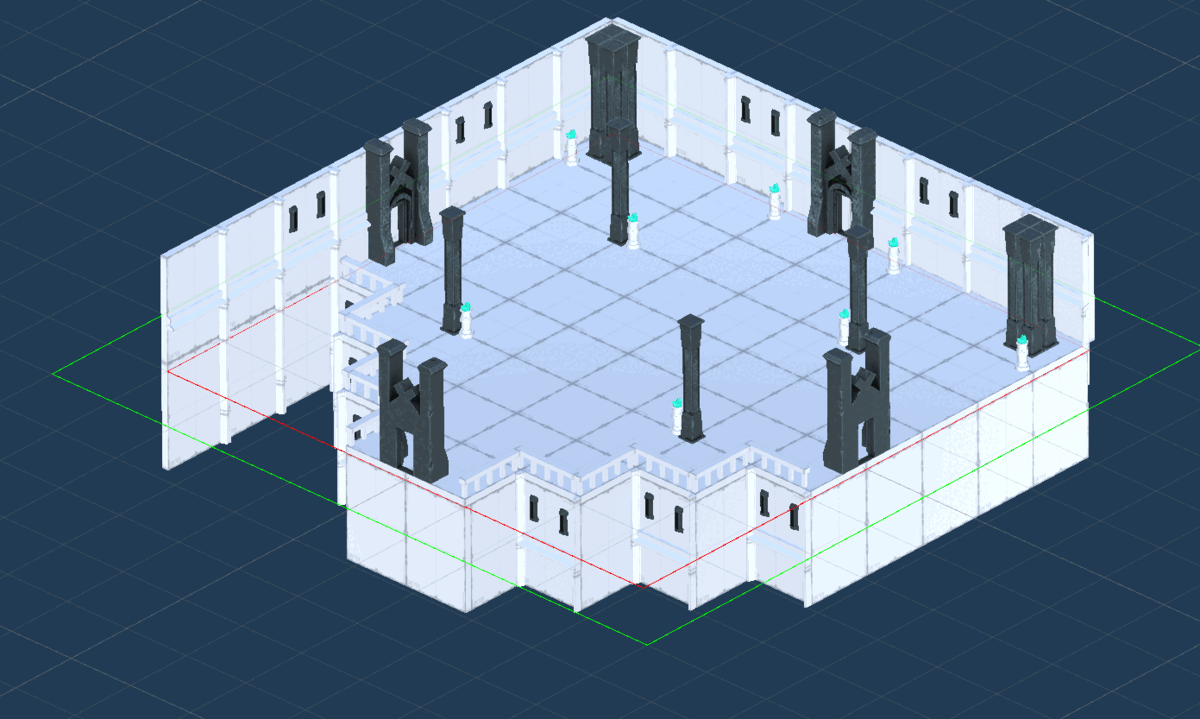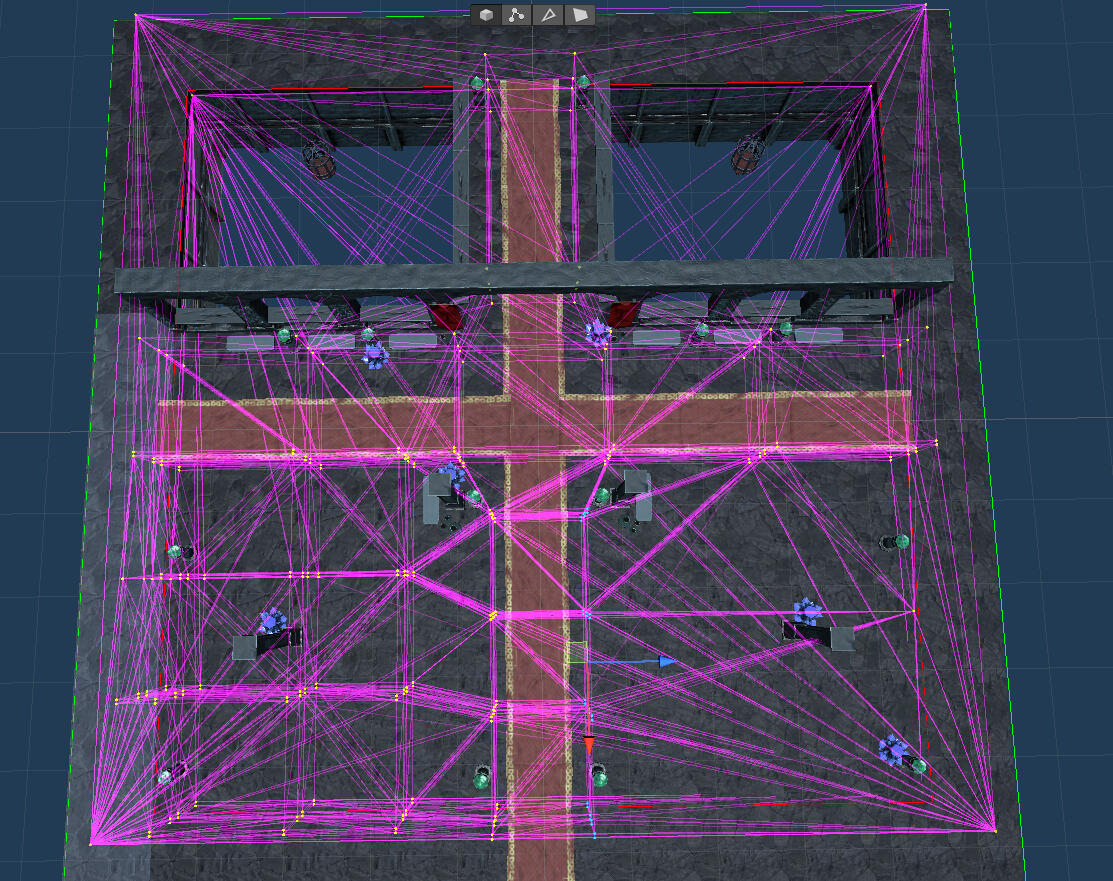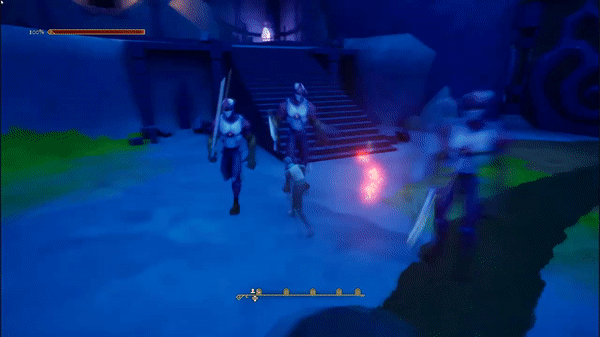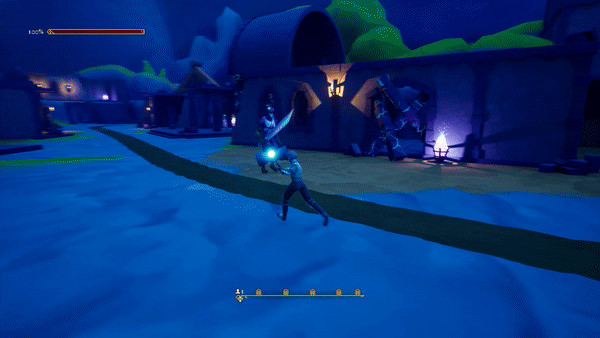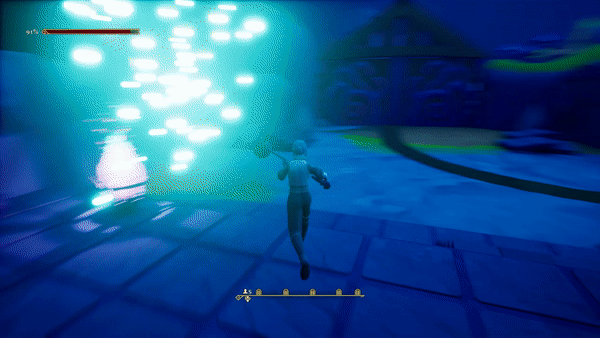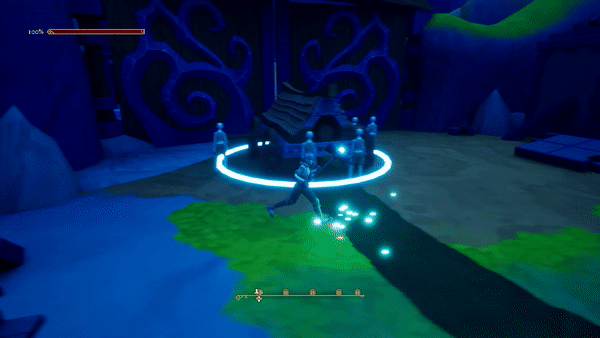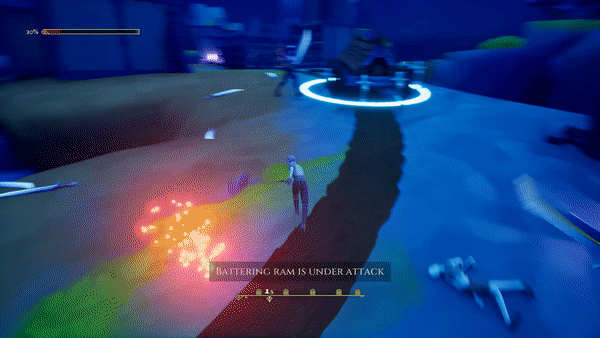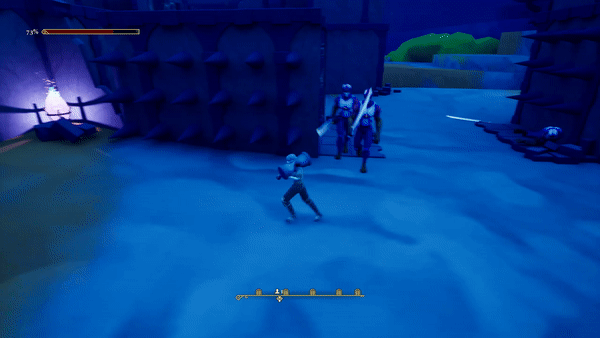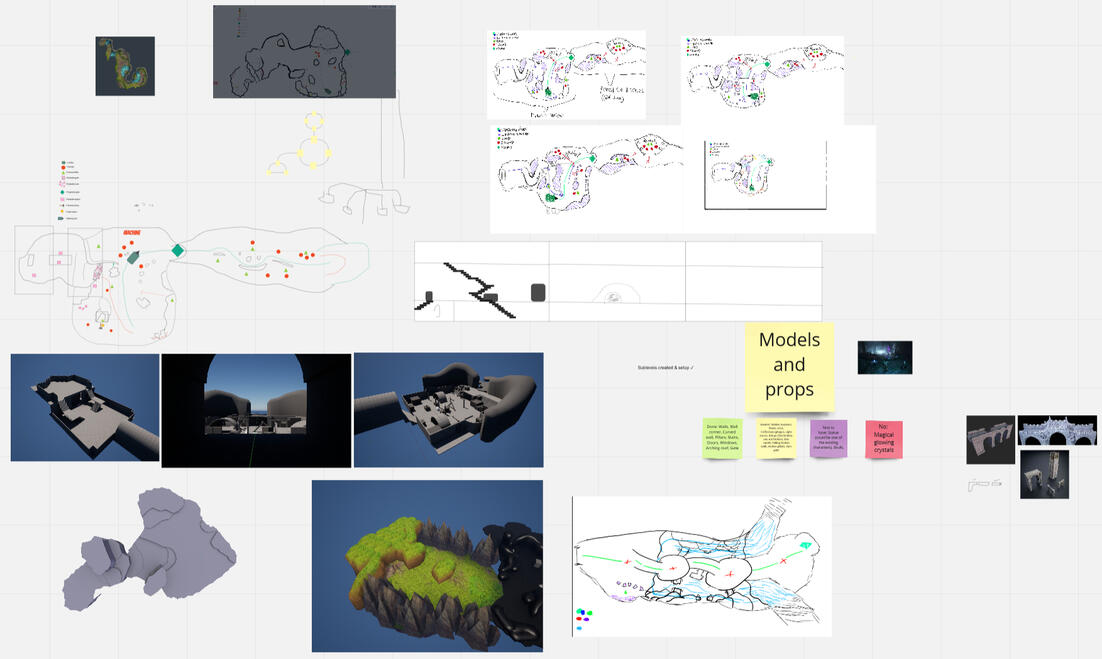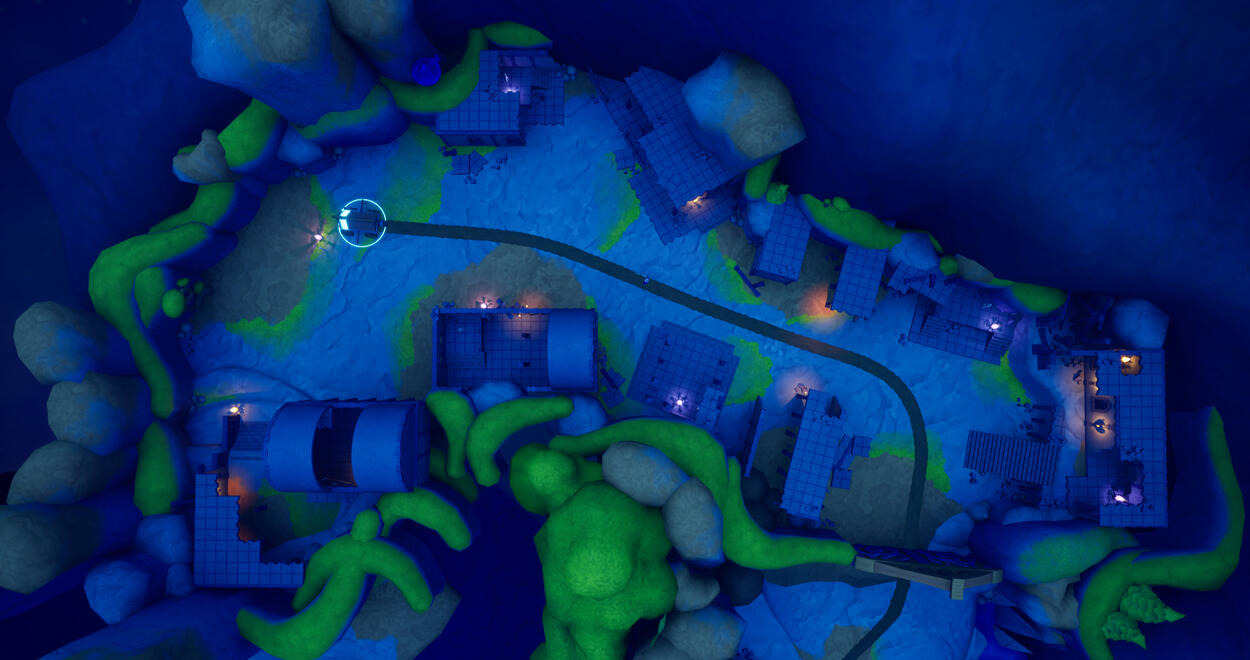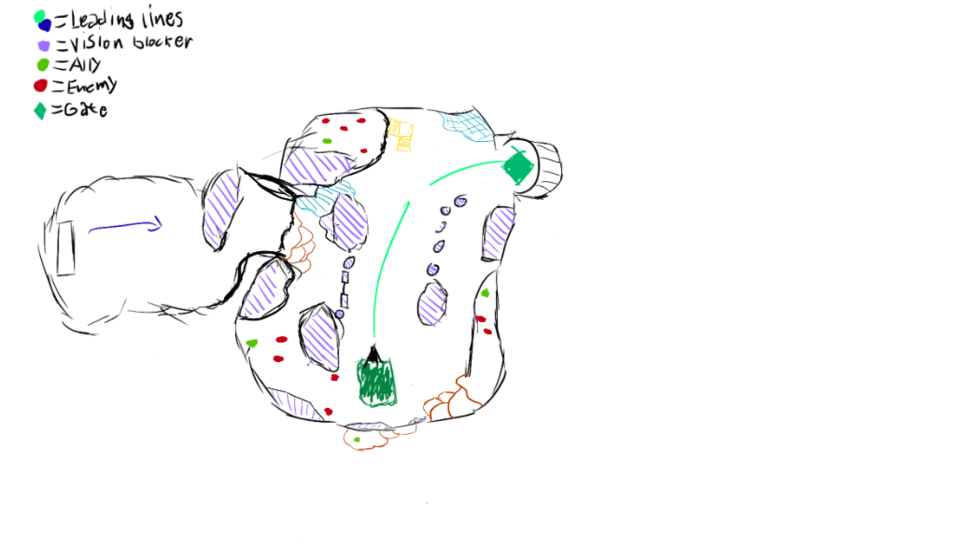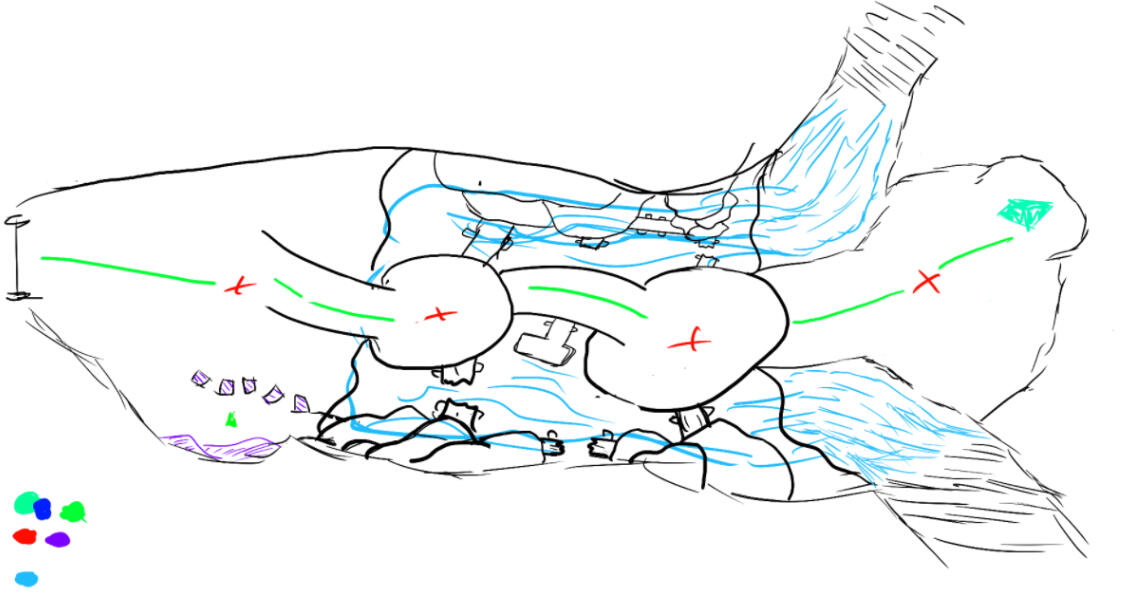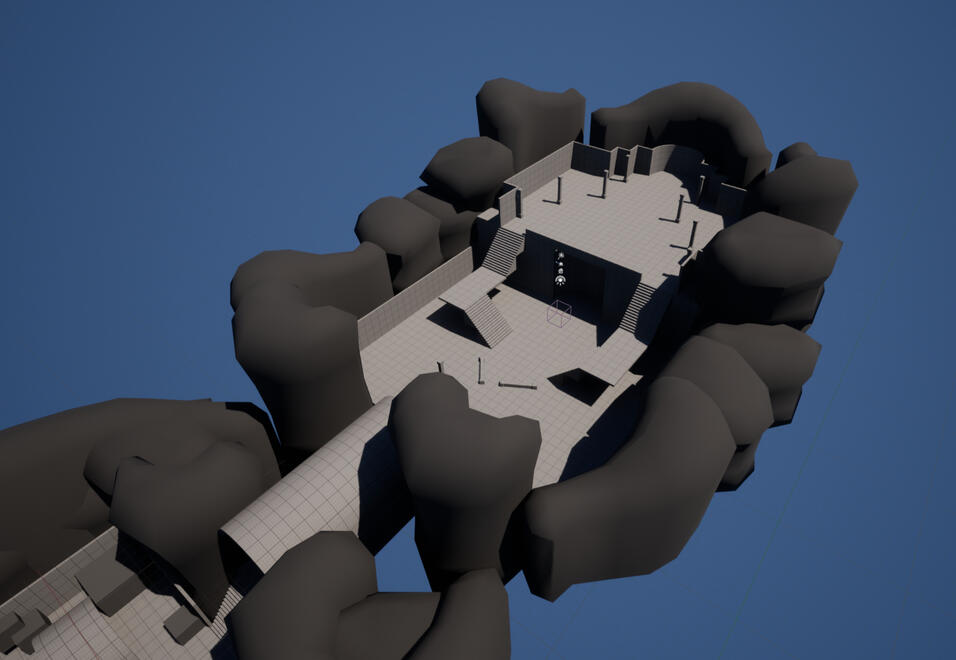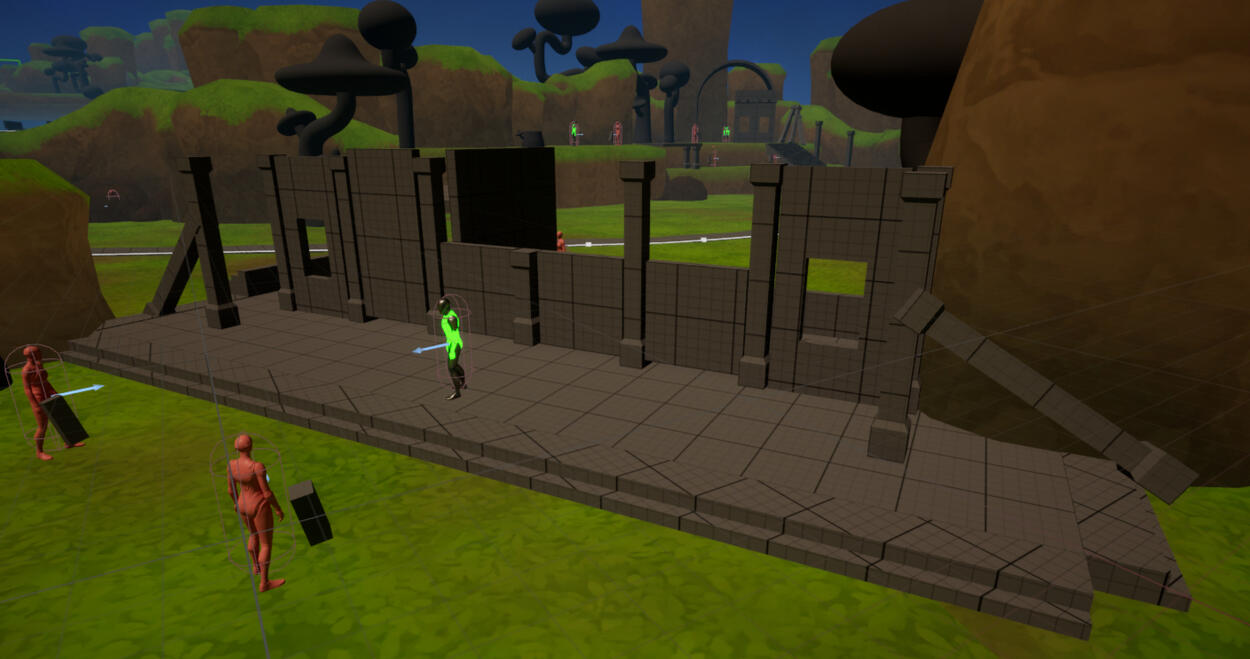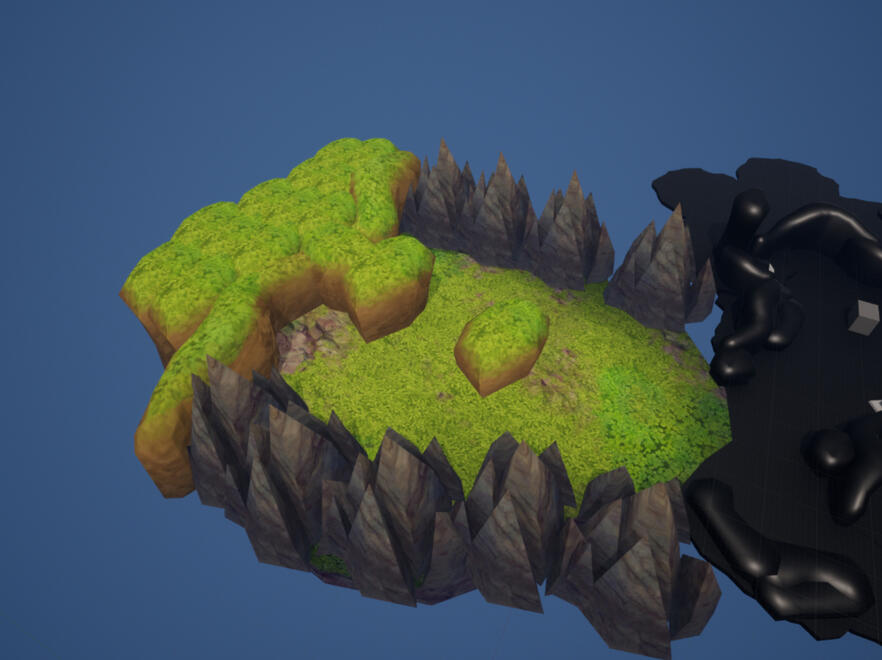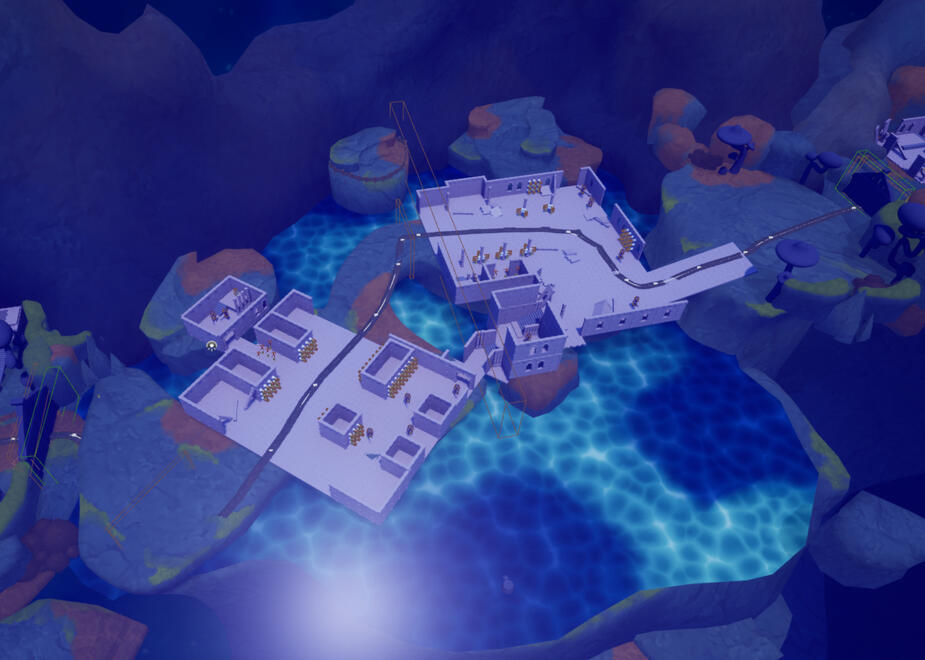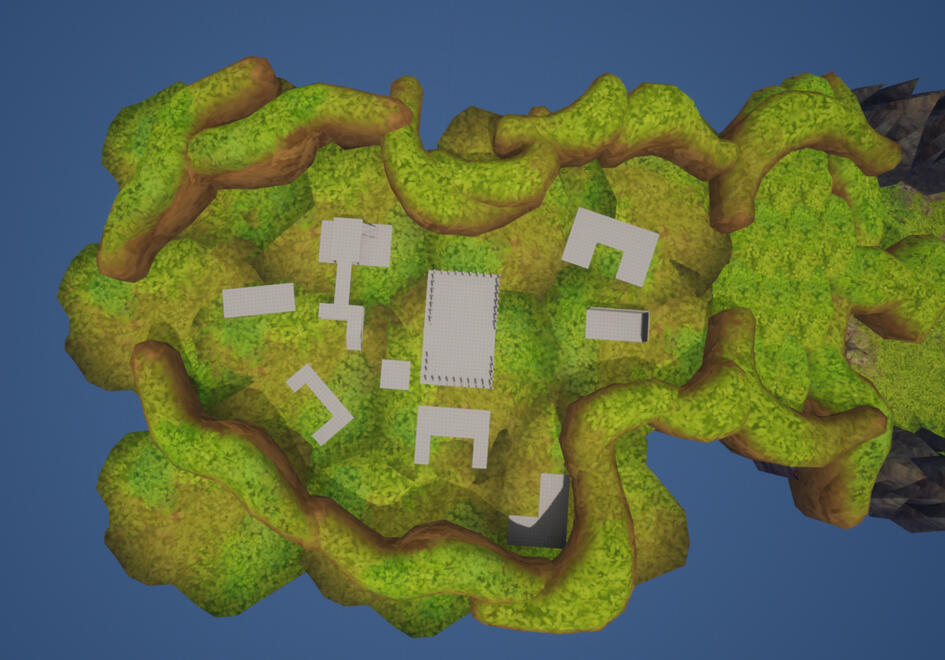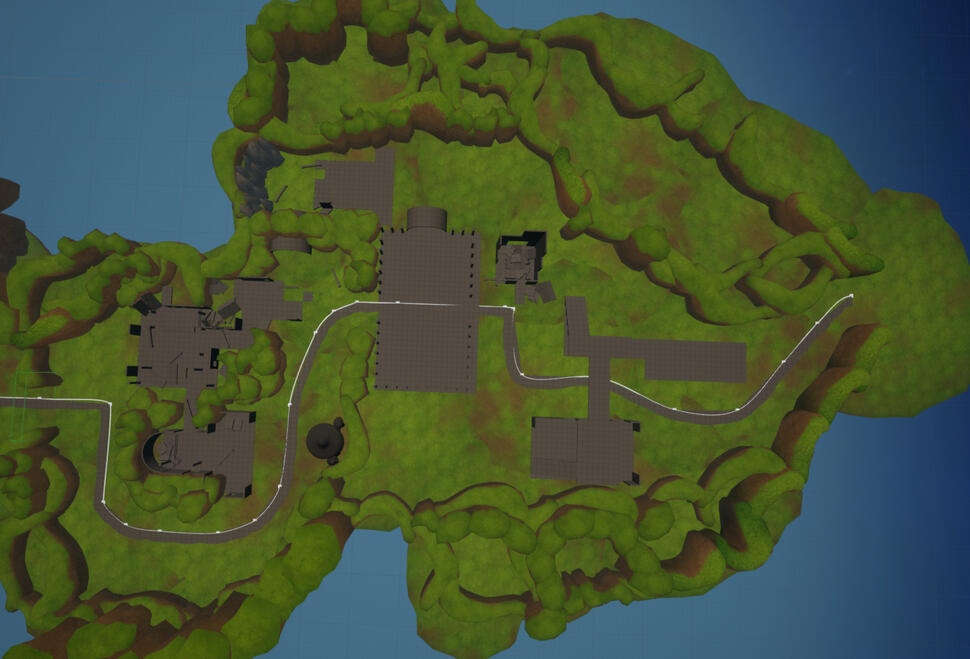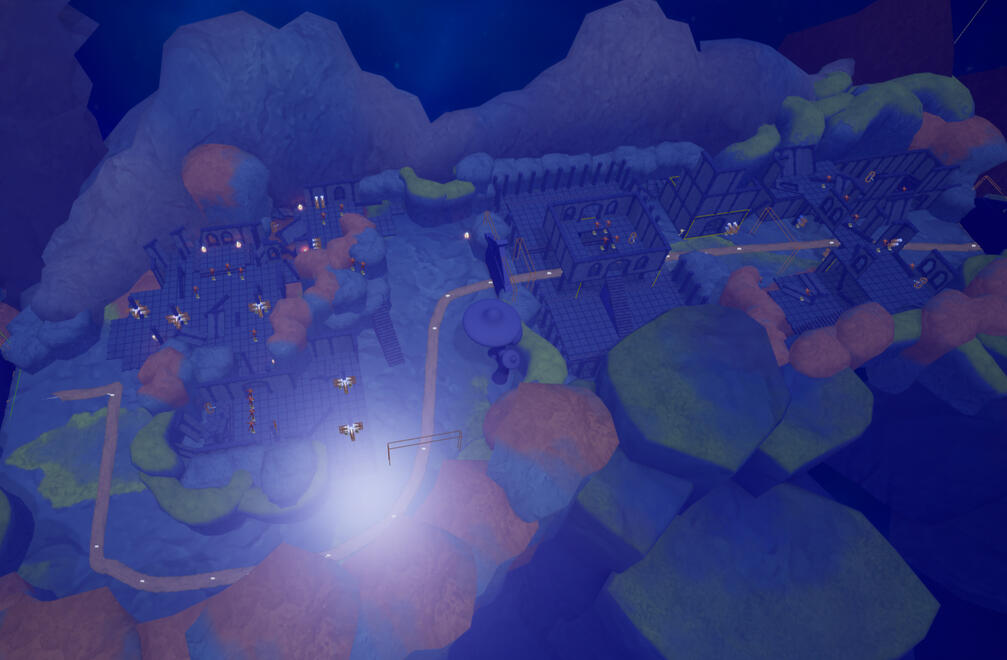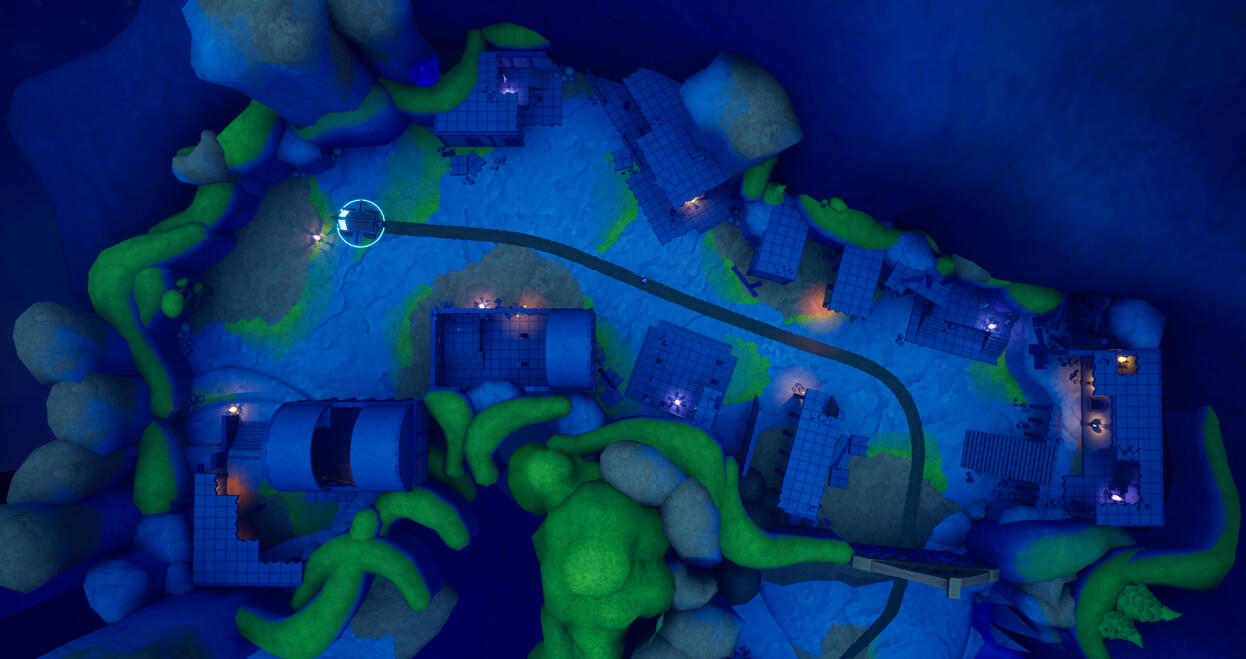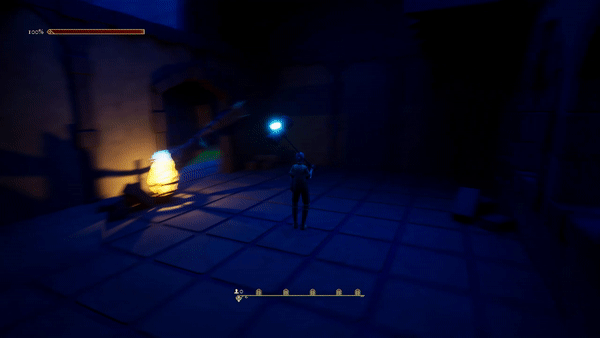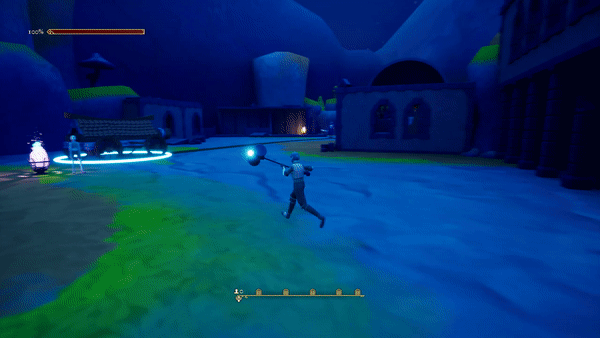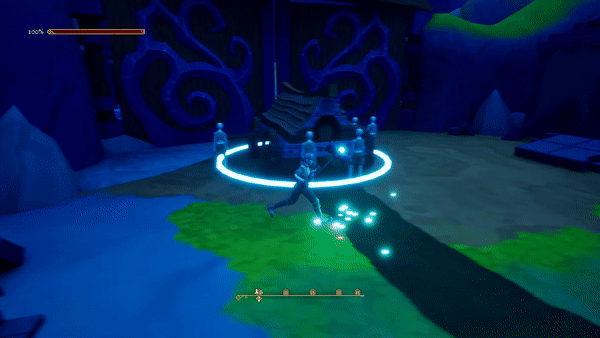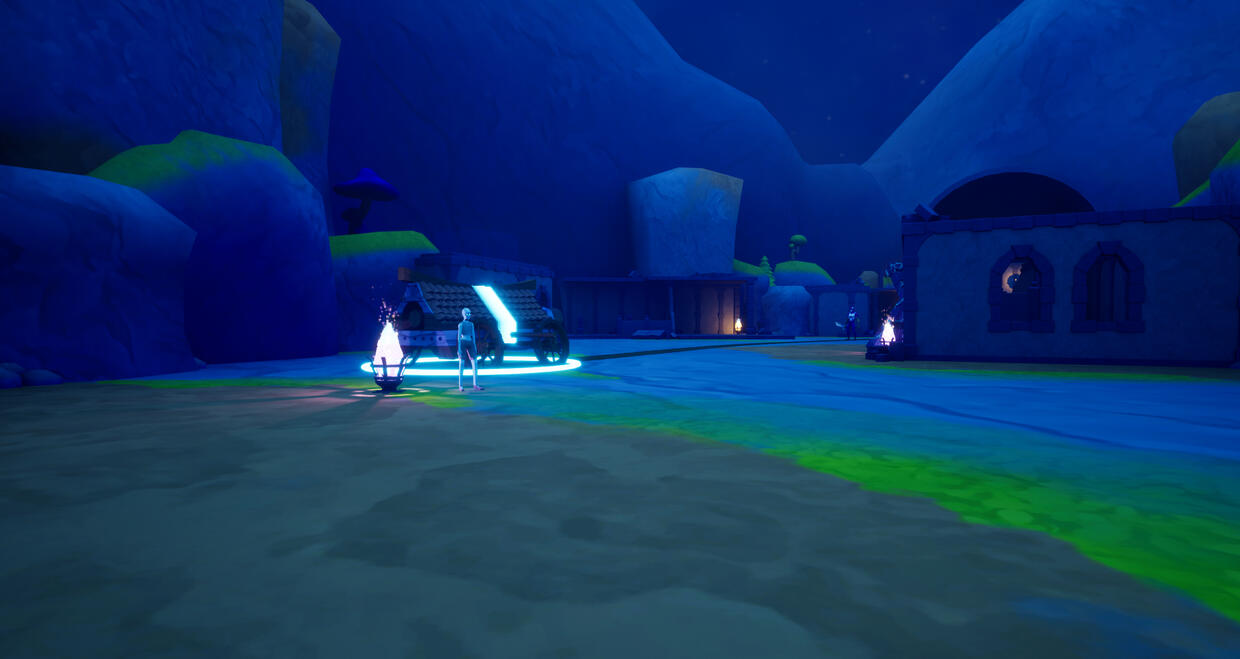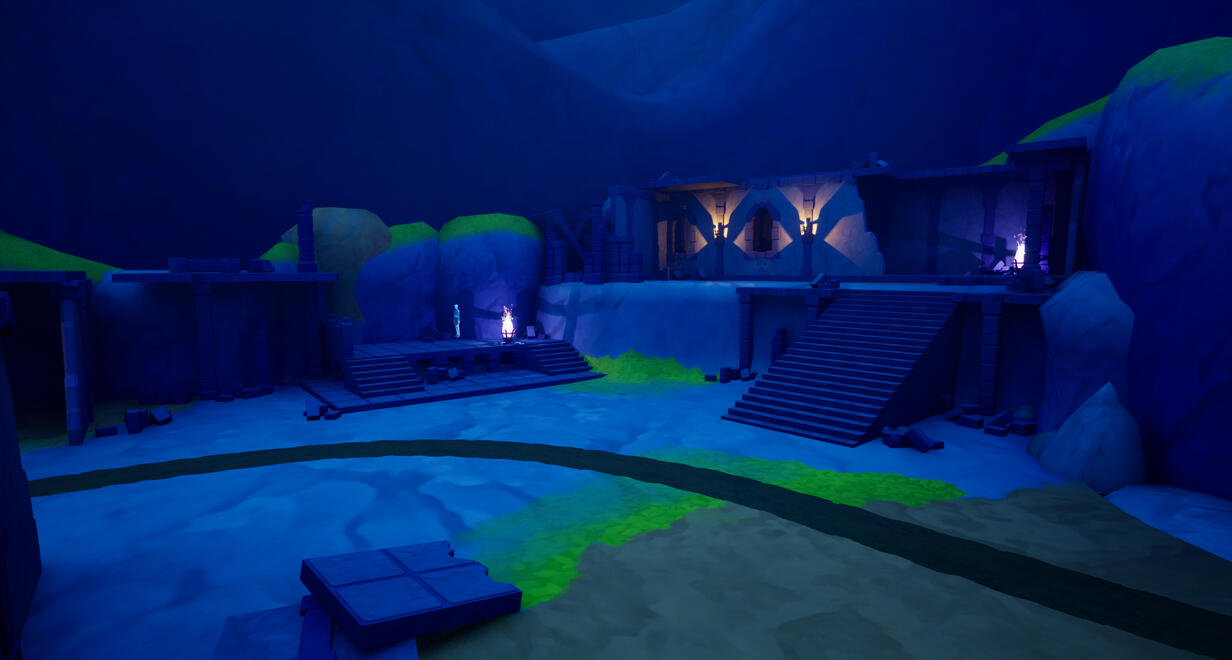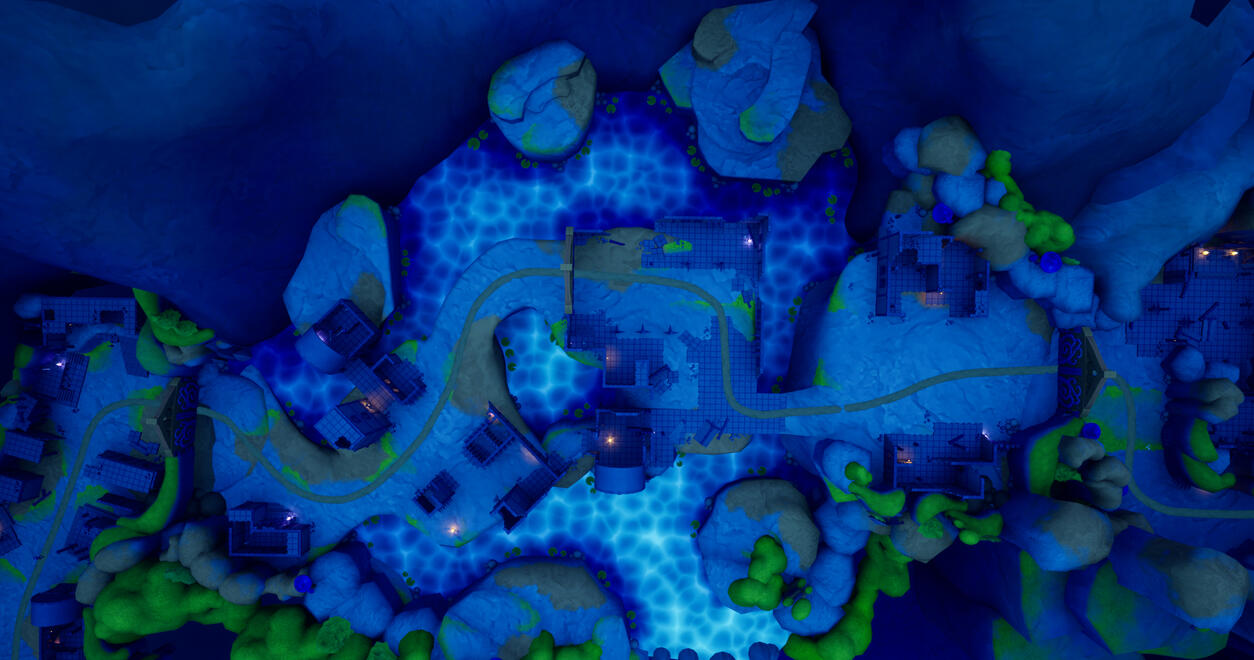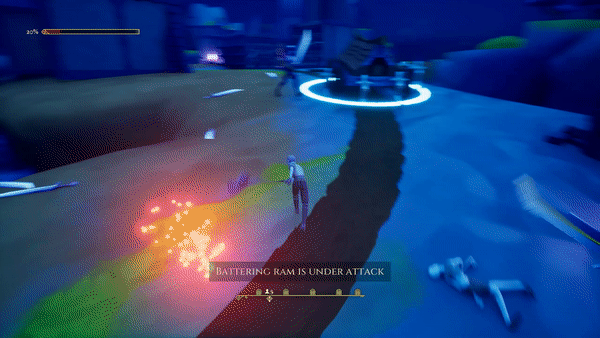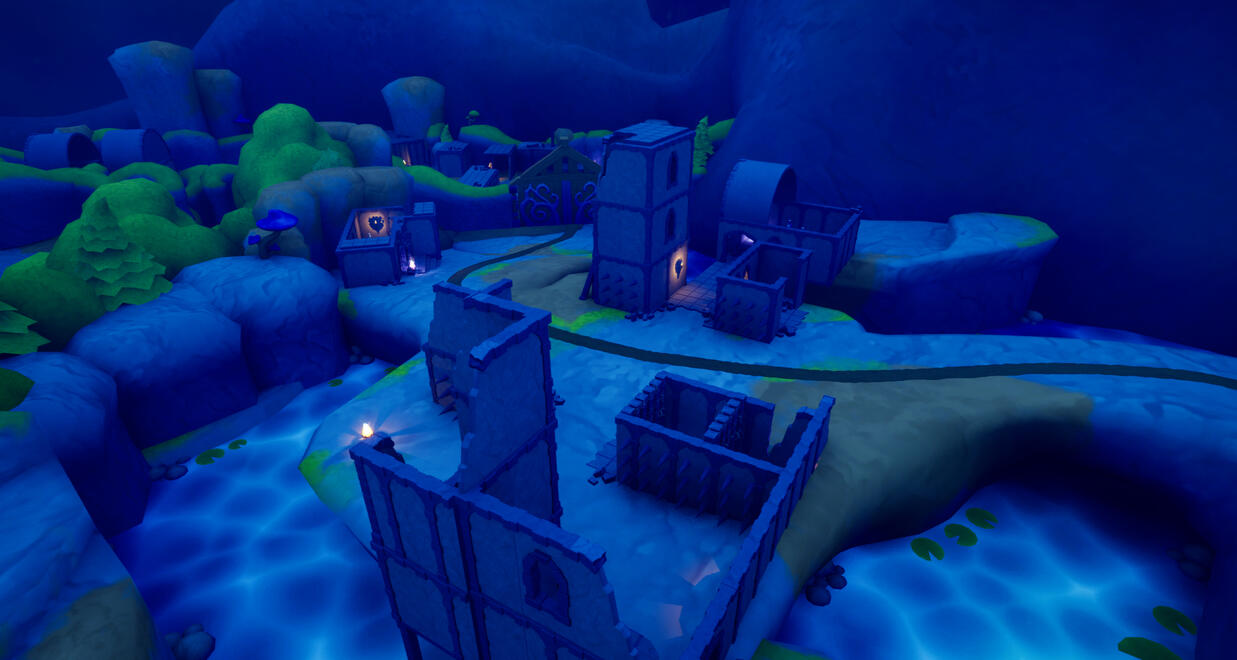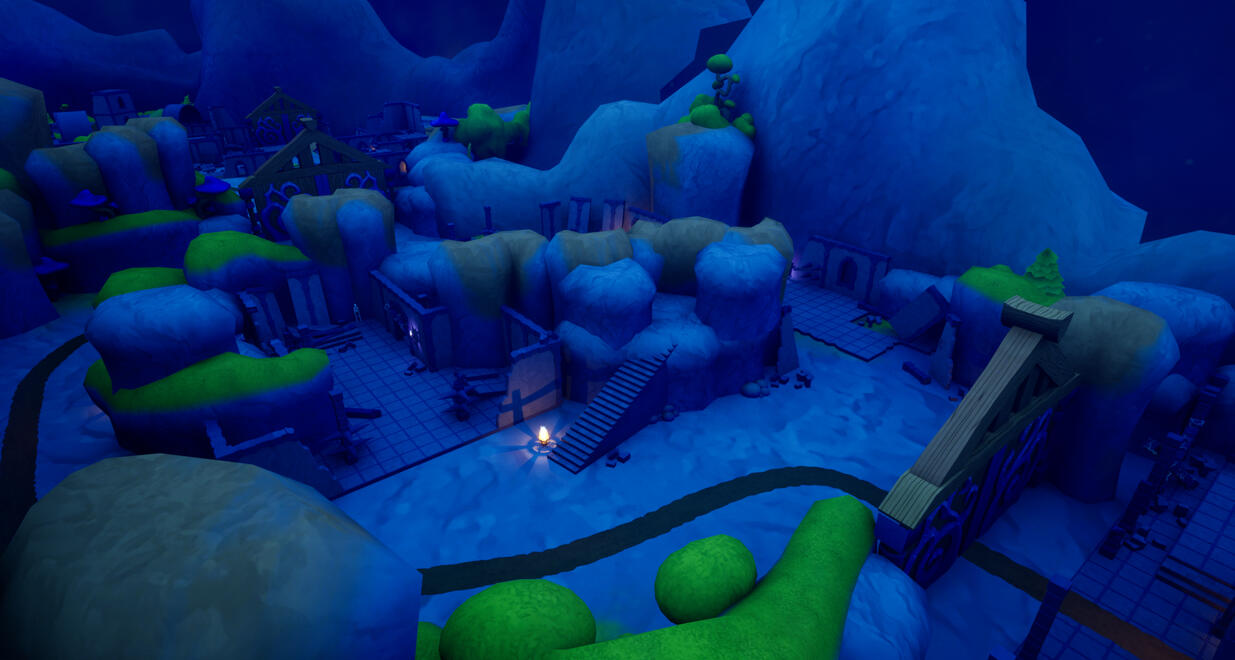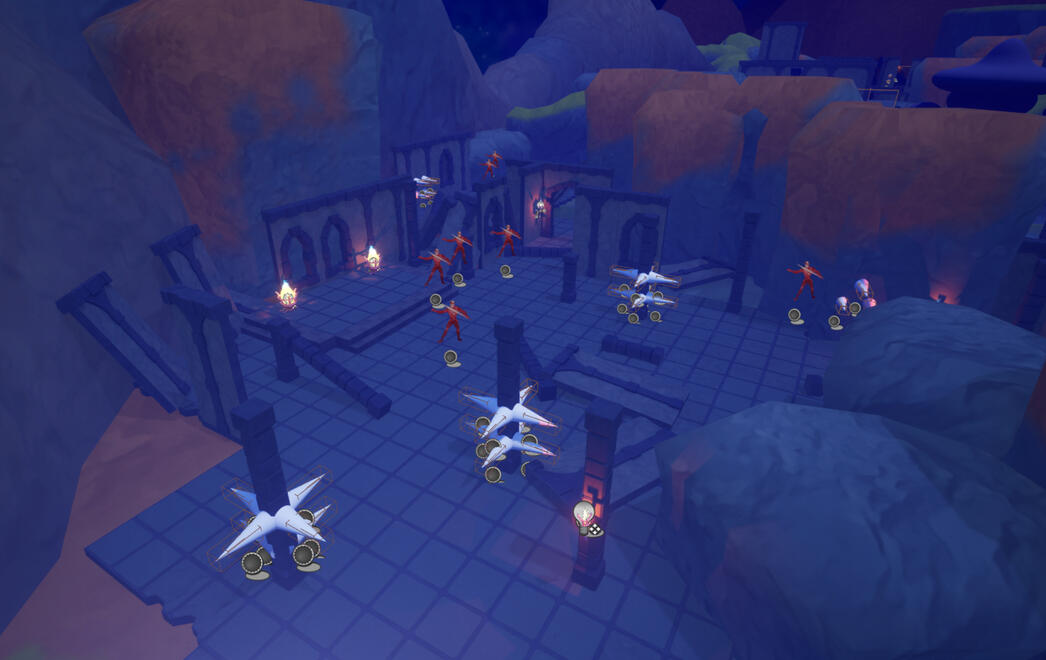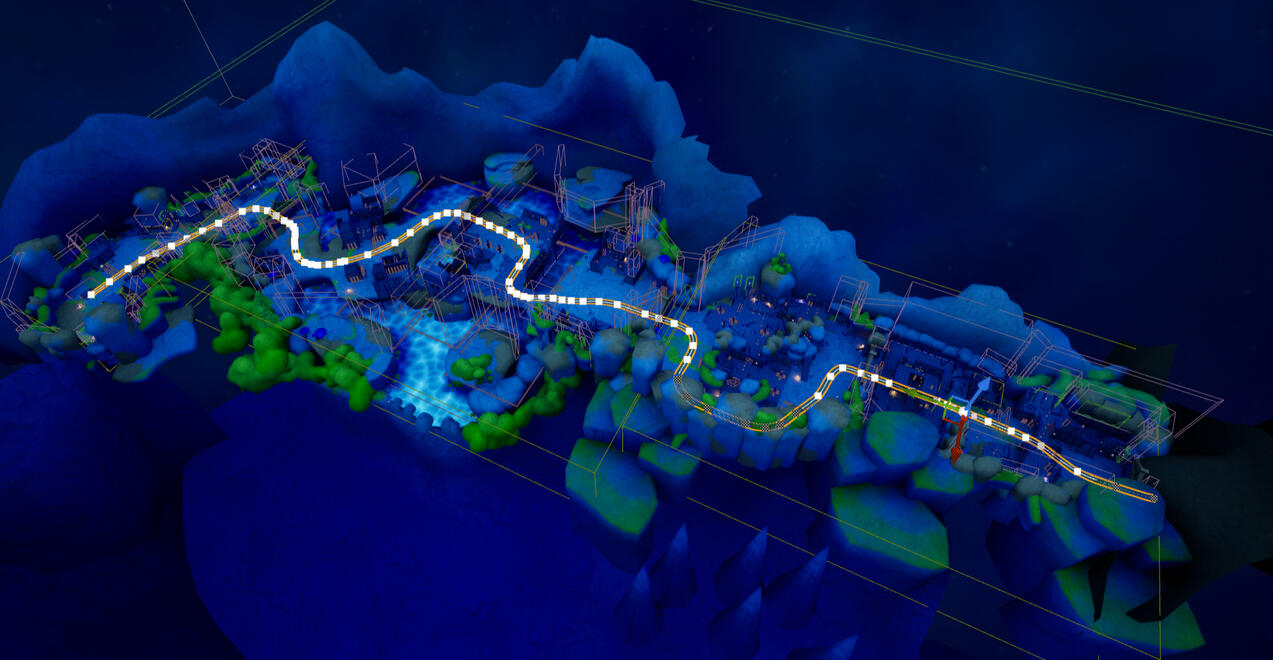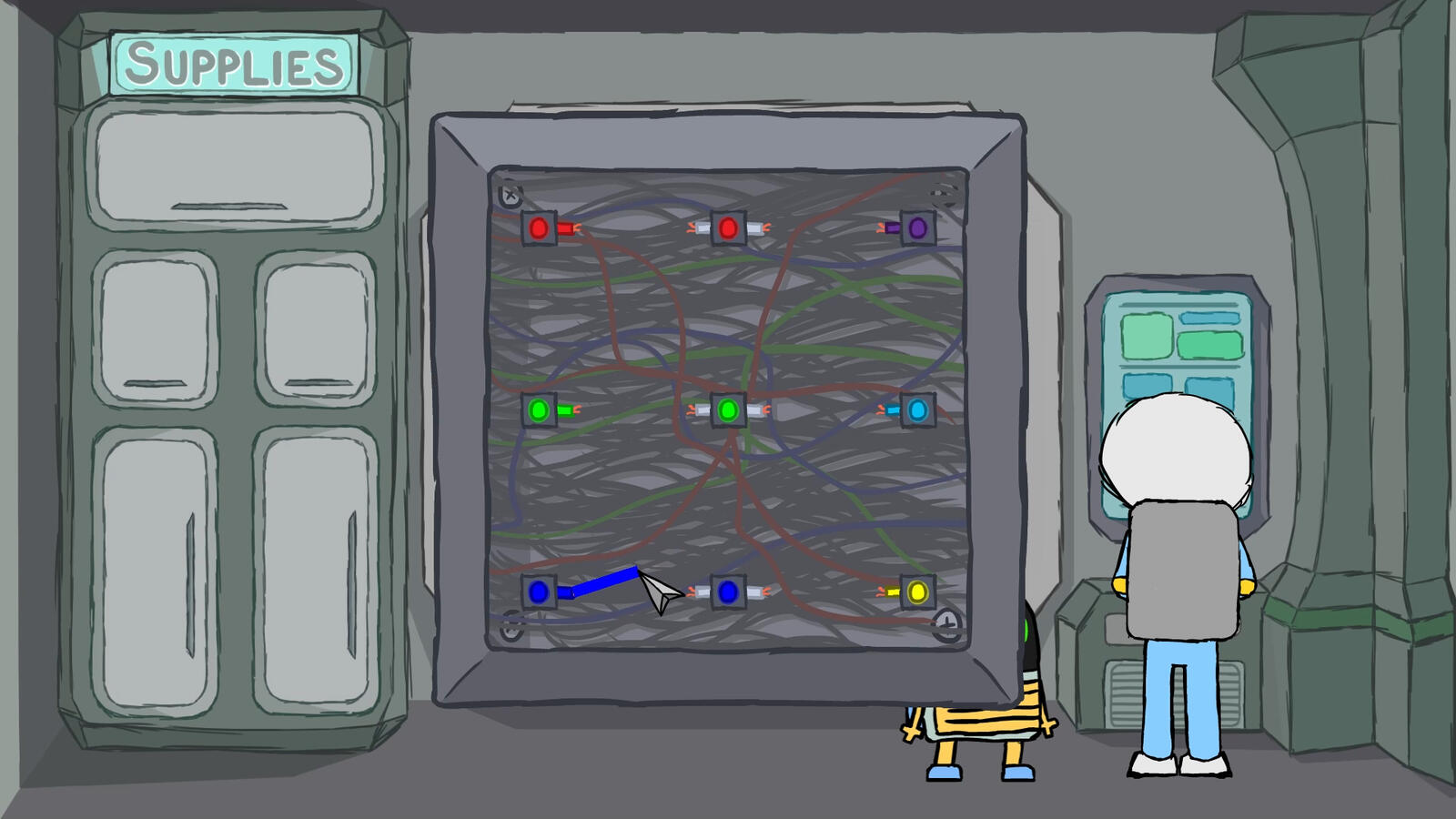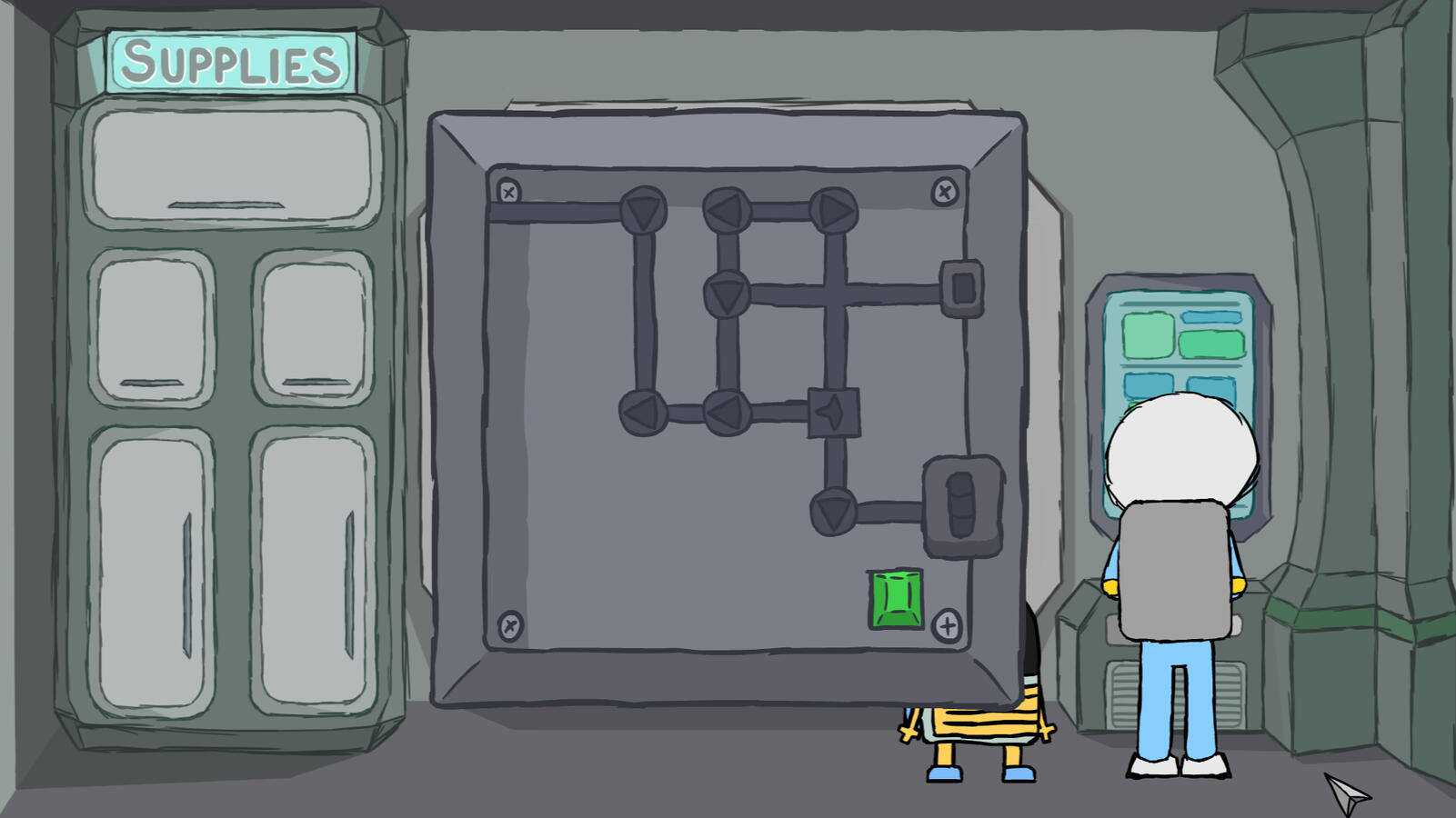
Alex Hagelin
Level Designer
HOME
Hello I'm Alex, a level designer. I love partaking in creative endeavours, and I love unique and niche ones even more. My interest from level design derives from my childhood favourite games like the Little Big Planet titles and various games with map editors on the PS2. I bring calm vibes and an open, inclusive mindset wherever I go!
Collaborative Projects
FutureGames
Solo Projects
Work in progess
Finished
About me
Education
Game Design (2018-2021)
MediaGymnasiet, Nacka Strand
Small game production
Project management
Character design
Level Design
Scripting in GameMaker Studio 2
D&D Blueprints in Unreal Engine 4
Prototyping
Scrum
Level Design (2021-2023)
Futuregames, Stockholm
Level Design
Communication
Group projects (up to 12 people)
Game production
Jira
Perforce
Agile workflow
Unity
Unreal Engine 4 & 5
Github
Me
Hello, I'm Alex. I was born the year 2002 in Sweden as a diabetic and have lived here ever since! I'm a Futuregames design graduate since 2023.Before Futuregames, I was studying game design in Mediagymnasiet. Now while I'm job searching I'm taking on a more generalist approach on solo projects.On my free time I like doing photography in nature, mostly of the wildlife and architecture. I also enjoy chess.I believe anything can be made fun, so I enjoy every game genre!
Lingual competences
Swedish, Native
English, Highly competent
Technical competences
Engines
Unity
Unreal Engine 4 & 5
GameMaker Studio 2
Skills
UE Blueprinting (big favourite)
Python
C#
GML
Trello
Jira
Git
Perforce
Adobe Illustrator & Photoshop
Åke
Game type: 2D point & click
Role: Level/Puzzle Designer
Dev time: 8 months, 2 days/week
Team size: 4
Engine: GML2 (GameMaker Studio 2)
Åke is a point & click puzzle adventure game where you play as the characters Åke, the stoic space enthusiast with his loyal robot companion 050. Throughout the game, you solve puzzles either through teamwork or through logical thinking.
Tools & Methods used
Game design document (GDD): Google documents
Backlog: Trello
Version Control: OneDrive
Sketching/conceptualising: Aggie.IO
Methodology: Scrum
Game pillars
Teamwork makes the dream work!
You will need to work together with your robot companion "050" to solve certain puzzles.
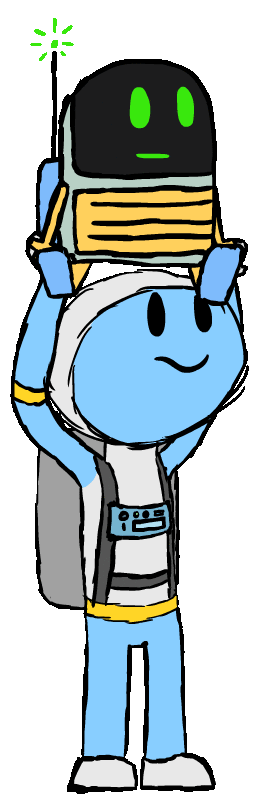
Logic above all
No clicking in obscure corners of the map to progress in this point & click. Everything is presented to the player in a clear fasion. It is up to the player to use their brains to solve the game!
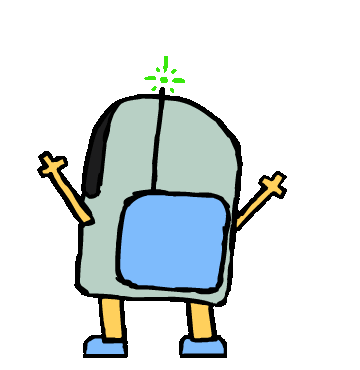
Gameplay loop
Explore --> Complete Puzzles --> Progress Rooms
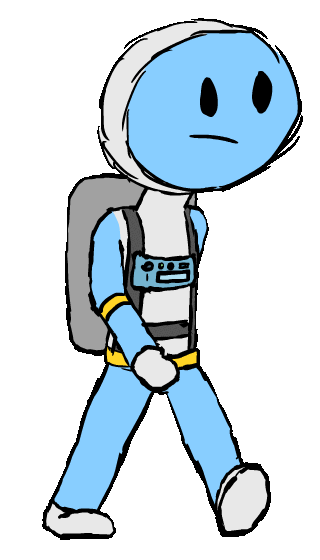
Game content & development preview
(Click to enlarge images)
My work
Summary
I was responsible for 2 puzzle rooms (1 & End Room), and an extra one which did not make it into the final product.My goal as a level/puzzle designer in this project was to ease the player into a way of logical thinking in a fun way. I achieved this by making puzzles that are familiar to the average game oriented person and put a twist on them. Playtests showed the puzzles would often catch the player off-guard, which is exactly what I wanted!
Room 1 design
The first room was designed to introduce the player to the core mechanics of the game. It teaches them to walk, interact with the environment and inventory interactions. The way this was achieved was mostly solved by letting the player figure it out themselves due to the simple nature of a point & click game.
End room design
Puzzle 1
Puzzle 2
The third room was designed to be a logical challenge that seems easy at first, but would turn out to be trickier than expected. This was achieved by taking familiar concepts and adding a twist to them.Puzzle 1 would take the familiar concept of connecting correct colors but with and extra step of combining colors.Puzzle 2 would take a concept of leading electricity through rerouters and eventually ending up at containers that need the electric charges. The twist here is that you need to loop the electricity through a special rerouter that multiplies the electricity.
Room design process
To make these room possible we went off of the AggieIO drawing board where we had sketched rooms and puzzle concepts. After chosing concept I would prototype the room and when we were all happy with how the prototype played out the artists went to work making the art assets for me to put together later on!
Scrapped room
The last room I worked on was a room with a face scanning puzzle where you had to match pieces of a described persons face in a terminal before you could proceed to the next room. You would get information of the person through reading notes or documents. It didn't make it in simply because it was rather plain, boring and would require more setup than we had time for.
Challenges & Reflections
This was the first "big" small game I made. The result of the finished product brought the whole dev team closer and created a huge sense of accomplishment. It turned out to be a big motivator to me as a game designer and it made me realise the joy of growing closer to people through relentless teamwork, backing eachother up and coming through with a product.The biggest lesson in this project was the importance of not burning yourself out and the importance of a consistent schedule. Even though we only worked on it 2 times a week the general feeling towards the latter half of the project was burnout, and I heavily feel that it was just because we had 2 times a week to work on it and because it was a school project it meant that we had a bunch of unrelated stuff in between which disrupted workflow and schedule. It became sort of an awkward pacing which forced us to give it our all during those 2 workdays which eventually led to a burnout that crept up on us.By far the biggest challenge in this project was how I was going to make the puzzles. It felt overwhelming at first, I had no idea how to design a fun puzzle from the ground up. But then i realised it didn't have to be from the ground up, I don't have to reinvent the wheel in order to make something fun. So going from there I just took inspiration from tried and tested classic puzzles.
Credits
Alex Hagelin - Programming, DesignAlfred Nilsson - Animation, Programming, Music & SFX, DesignChrister Johansson - Lead Programming, DesignJonna Lidberg - Background Graphics, Artwork, Design
Play it yourself!
Slash slash clean
Game type: Top down isometric hack & slash
Role: Level Designer
Dev time: 4 Weeks, 5 days/week
Team size: 11
Engine: Unity
Slash Slash Clean is a hack n’ slash game where you control a character known as the Chosen One, who stumbles upon a magical talking sword obsessed with cleanliness.In the game you, together with your nagging sword, must make your way through a procedurally generated dungeon in order to find and defeat the Raven Lord!
Tools & Methods used
Game design document (GDD): Microsoft Word
Backlog: Jira
Version Control: Perforce
Sketching/conceptualising: Miro
Methodology: Agile, Scrum
Game pillars
Fast Paced
Keep the gameplay fast paced so that the player stays engaged and has fun.
Grim Tone & Witty dialouge
Create curiosity and interest in the world by contrasting the grim tone of the world with witty dialouge.
Unique twist on cleanliness
Have the player manage cleanliness of the sword to create engagement through reward & punishment with a unique cleaning mechanic.
Gameplay loop
Explore rooms --> Kill enemies --> Clean weapon
Game content & development preview
(Click to enlarge images)
My work
Summary
In this project I was a solo level designer which meant I had to design each room myself, communicate with both the programmer who handled the procedurally generated map and with the artist that handled all the props!My goals for the level design in this project was to make each room sort of a playground for the player.Because I was working with a tile based generation system I worked within perimiters that one of the programmers set up and that also meant I had to make each room tile a prefab for it to be generated in-game.I also got to work with lightprobes to set up correct lighting within the room tiles.
Pre-room design
One thing i tried to take from my Åke project was setting a certain bar for how a room tile looks just to create consistency, have a rough list of what assets would fit in the room and make sure the team was onboard with how everything was mostly going to look.This blockout room was made through the ProBuilder tool in Unity and it made it very easy to plan things with the prop artist since I basically made my own LDK (Level Design Kit)!
The room tiles
(Click to enlarge images)
The process when it came to making these rooms were at first to look for inspirations through random google images searches. I would then get an idea of what I wanted to do and get straight to blocking out the room.Afterward I would consult with and show my team what I had made during our scrum meetings. I also had to communicate with the programmer responsible for the procedural generation if the generated walls were going to be placed in the correct spot and if the doorway placements would work.When I got the go-ahead from the team I polished the blockout as much as I could before the prop artist was done with the props from the Pre-Room design, along with some extras.When the artist was done I went straight to populating the rooms with the props and finished it off by adding lightprobes.
Light Probes!
As well as general level design I got introduced to working with light probes in Unity. With the help of some Youtube videos and one of the programmers I got the gist of it and took the responsibility of doing it.
Cut content
There was some content that had to be cut for times sake, kill your darlings as you call it in the industry. For example a fourth room was in the making but after a talk with the PM (Project Manager) we figured we didn't have time for. I decided it was better to polish the other rooms more than to have one extra room at the cost of polish for everything else.
Challenges & Reflections
I got to learn a lot about cross discipline cooperation in this project, and being a solo level designer I had a lot of responsibility when it came to the communication between programmers and artists. With the programmers I had to coordinate where to place objects within a grid one of the programmers made in order for the procedural generation to work. With the artists I gave measurments and communicated how things were generally going to look in the environment.On top of that this project I really feel like I got a grasp on making simple Level Design kits for myself through Unity's ProBuilder addon. It was great cause I could freely make props to discuss and give measurments to the corresponding artist. It simply made communication smoother!
Credits
Designers: Alex Hagelin, Emma Jerlin, Halldór Kári KristmundssonArtists: Christopher Haibel, Hampus NormanProgrammers: Alexander Dolk, David Naussed, Josef LindvallProject Managers: Julia Engman, Michael Sundblom
Our Dying Rights
Game type: 3D Third-person whack & smash
Role: Level Designer
Dev time: 7 Weeks, 5 days/week
Team size: 14 (2 level designers)
Engine: Unreal Engine 5
Our Dying Rights is a 3rd person whack and smash with a focus on protection.You play as an undead who has awoken in their crypt to find humans harvesting your people for your magic. Your mission is to rescue and protect them, then escape the crypt together using the battering ram.
Tools & Methods used
Game design document (GDD): Microsoft Word
Backlog: Jira
Version Control: Perforce
Sketching/conceptualising: Miro & Aggie.IO
Methodology: Agile, Scrum
Game pillars
Protecting the people
Gather your people and protect them as they push a ram that will help you escape your own resting place.
Risk vs reward
Look around for more allies while risking the battering ram & your allies being ambushed during your absence.
Strong together
You and your allies cover each other's weaknesses. Your allies are brittle and weak but got the will to push forward. You are their guardian and protect them when they are the most vulnarable.
Gameplay loop
Exploring & finding allies --> Save allies --> Protect allies pushing the battering ram
Game content & development preview
(Click to enlarge images)

Breaking a blockade

Gathering an ally

Combat

Breaking an obstacle to gather an ally

Enemies attacking allies

Opening a gate with the battering ram

Enemy dies by drowning

Enemy dies by spikes

Siofra River, main environment inspiration

Miro level design board

Scrapped early first area iteration

Finished first area
My work
Summary
In this project I got to work together with another level designer. We made beatmaps and sketches together and gave eachother feedback during the whole process from the drawing board to the in-engine stuff.I handled a bunch of level design aspects in this project but my main focus was the last section of the game. On top of that I also handled ruin structures and some environmental elements in the other sections.I was also in charge of placing out the important elements of the game such as enemy spawns, the spline that the battering ram moves along, allies, breakable obstacles, gates and lights!The level design goals we had during this project was to bring the pillars of protecting and risk vs reward to light.
Sketches & Beatmaps
At the start of the working process me and my fellow level designer started out by making sketches of how the first area could look like. We had to keep in mind to keep it cave shaped since the game was going to take place in a cave like environment.
Throughout the first week we made a lot of iterations on the first rooms beatmap. We thought it would be good to have a bunch of options to consider. The room in the end got a completely different look after iteration in-engine but it still follows the general structure.
Blockouts
Area 1 design
The first area goes very light on the player and is supposed to be the tutorial section of the game, which teaches the player to break obstacles, gather allies, kill enemies and break through the first gate.
Area 2 design
Area 2 tries to expand more on creative ways to defeat enemies by using your secondary attack to push enemies into hazards such as spikes and water. It also introduces more exploration through pathways that stray from where the cart is. It also has quite a bit of ambushes but the hazards make them quite easy to dispose of!
Area 3 design
Area 3 is the last room before you can escape and win, therefore it has the most amount of resistance you'll find. There's also tight corners and structures where enemies are lurking so you have to be on your guard in this area. There are however quite a few allies to be found in the ruins if you dare leave the battering ram unattended.
Level elements
I handled the level elements in all of the areas. That includes the spline on which the battering ram is traveling on, enemy spawns, allies, ally lights and gates! This means I got to work together with programmers to get the spawners right, make sure there aren't any softlocks etc
Challenges & Reflections
It was a bit of a shaky project at first. I had never cooperated with another level designer and so a lot of communication was a bit on the low end. We ended up resolving it through sprint reviews where we would express our concerns with the project. So there was a learning experience there!There was also a bunch of smaller things I got to learn about as the project went on such as how to use splines and how to time enemy encounters!The biggest failure with this project was that the environment that was supposed to be like a big cave, inspired by Siofra River didn't feel like a cave at all. We didn't have enough time to fix it so we just rolled with it and changed the lore a bit.
Credits
Designers: Alex Hagelin, Arian Behfar, Fredrik Thamsten, Mattias Aminpay, Sandeep UpadhyayArtists: Ikaros Carty, Noah Arkö, Yanna EngdalProgrammers: Carl Ericsson, Martin Jonsson, Tomas Wallin, Vivienne KohQA: Emelie Eriksson Karlsson, Gustav Lundh
Third Person Obstacle Course
Prototype
Game type: 3D Third-person platformer
Role: design, scripting
Dev time: 1 Week, 5 days/week
Team size: Solo
Engine: Unreal Engine 4
This was a solo project made to mainly practice both scripting skills in UE4 and level design. Assets used is made by Synty Studios. Since I like making playground-like environments for the player I wanted to make an interactable level with tutorials that ease the player into the mechanics.The progression of the level is inspired by how Super Mario structures their levels: Introduce a mechanic, challenge player, introduce another mechanic, challenge player with that new mechanic + previous etc...
Boomerang obstacle course
Prototype
Game type: 3D First-person platformer
Role: design, scripting
Dev time: 1 Week, 5 days/week
Team size: Solo
Engine: Unreal Engine 4
Similar to the Third Person Obstacle Course this was also made to practice UE scripting but this time making a level more revolved around a certain mechanic which would be throwing a boomerang. Assets made by Synty Studios.
Unnamed Tower Defense
Game type: Tower Defense
Role: design, scripting
Team size: Solo
Engine: Unreal Engine 5
Work in progress!
Unnamed Third Person Platformer
Game type: 3D Third-person platformer
Role: design, scripting
Team size: Solo
Engine: Unreal Engine 5
Work in progress!
Contact
The bigger picture
The game starts with an intro of Åke being awoken by his robot companion 050. He is then instructed that the space station he is on has had a terrible accident and must evacuate immediately. Åke then gets out of his bed and starts exploring the first room.The first room then introduces the player to the basic mechanics of walking around, picking stuff up and interacting with the inventory. To progress you insert a keycard into a door.In the second room Åke is faced with a fire hazard and must use a fire extinguisher to pass. Unfortunately the extinguisher has no fuel. This introduces the teamwork part of the game where you have to cooperate with 050 to find the fuel to be able to use the extinguisher and get past the fire.In the last room Åke has almost reached the escape pod, but it would seem that the hatch for it is closed. To get it open you need to solve some puzzles that seem simpler than what they are.
The team
The developer team consisted of 4 people from Mediagymnasiet in Nacka Strand, me as one of the programmers/designers, 1 lead programmer/designer and 2 artists. Since it was a pretty small team everyone had a say in the design of things in order to keep check that the game felt consistent and fit with the general game.
The bigger picture
The start of the game includes exposition in the form of dialogue and text.The game starts with the player at the beginning of the first level. Each level is procedurally generated and contain different rooms. The rooms are filled with enemies, and the doors leading out of a room with enemies gets sealed off whenever you enter a new room. To open the exits you must clear all the enemies in the room.In or in between fights you must also keep your sword clean or you will deal less damage and become slower. If the sword is at maximum cleanliness you go into an "ultimate" state where you do extra damage and are extra fast.To finish the game you have to find the boss room where you will meet the Raven Lord and defeat him.
The third room was designed to be a logical challenge that seems easy at first, but would turn out to be trickier than expected. This was achieved by taking familiar concepts and adding a twist to them.Take for example the wiring puzzle on the right, inspired by the wiring task from Among Us. Here I took familiar mechanics where you would pull colored wires and drag them to the corresponding input. But of course that's way to easy and wouldn't accomplish my goal of giving a twist to the puzzle. So i added a layer on top of the puzzle where you combine the first 3 wires with inputs to create a completely new different color, which would then go into a corresponding slot. I found it to be a nice mix of complexity and simplicity as it made the player think ahead and try to visualise which color would be created if they pull for example red to blue.To make this puzzle...
The next puzzle is about leading electricity to containers through a pipeline, each container requiring a certain amount of charges gained from the electricity instances. To do that you press a green button which releases an electricity instance that goes through the pipeline. To lead the electricity you can click on rerouters marked with arrows and the electricity will follow where the rerouter is pointing. However this would turn out to be too simple for the goal in mind, so I added a splitter which spawns 2 electricity instances going the opposite direction of each other whenever electricity passes through it. And that really got it the depth I intended, it made it possible for the player to solve it in multiple ways while not being a straight forward puzzle.To make this puzzle...
make games because I enjoy the comradery that occurs during collaboration projects. I also find fulfillment in being able to have a creative outlet, coming through with a product and hopefully making someone happy.
GDD:
Backlog:
Version control:
Sketching:
Google
documents
Trello
OneDrive
AggieIO

